Home » 1st Grade Teaching Resources » 9 Helpful 1st Grade Writing Rubrics & Worksheets


9 Helpful 1st Grade Writing Rubrics & Worksheets
First grade writing rubrics are helpful tools for both you and your students when introducing an assignment and what is expected. They clearly outline what is to be included in the paragraph and will function as a reference for the students as they are writing.
To introduce rubrics to first grade students, start by going over what is needed to earn the highest score in each category. Then give examples of what would earn the lowest score to give them an idea of what not to do. Once the assignment is completed, the rubric serves as a guide to help you grade.
Table of Contents
What is a rubric in 1st grade, best 1st grade writing rubrics & worksheets, what are the 3 categories of a writing rubric, check out these additional 1st grade resources.
Rubrics are used at every academic level from first grade to college and vary in complexity. The first basic component of a rubric will be the criteria items, depending on what the assignment focus is, such as punctuation, including verbs or nouns, etc.
A rubric generally includes four levels of how well that criteria is met. A 4-by-4 rubric is a good place to start if it’s the first time your students are seeing one. As the year progresses you can add criteria to what you’ve previously used to introduce more concepts and a more complex rubric.
You can find many lesson plans and rubrics on Teach Simple , a marketplace dedicated to helping teachers in the classroom by providing high quality materials that meet the standards of Common Core (USA) and Core Curriculums (CA, UK, AU). Additionally, all the materials provided are created by teachers themselves where they earn 50% of all revenue. In partnership with Teach Simple, I’ve gathered 9 helpful 1st grade writing rubrics to begin using in your classroom. Have a look!
- First Grade Grammar Rubric From Learn For Your Life
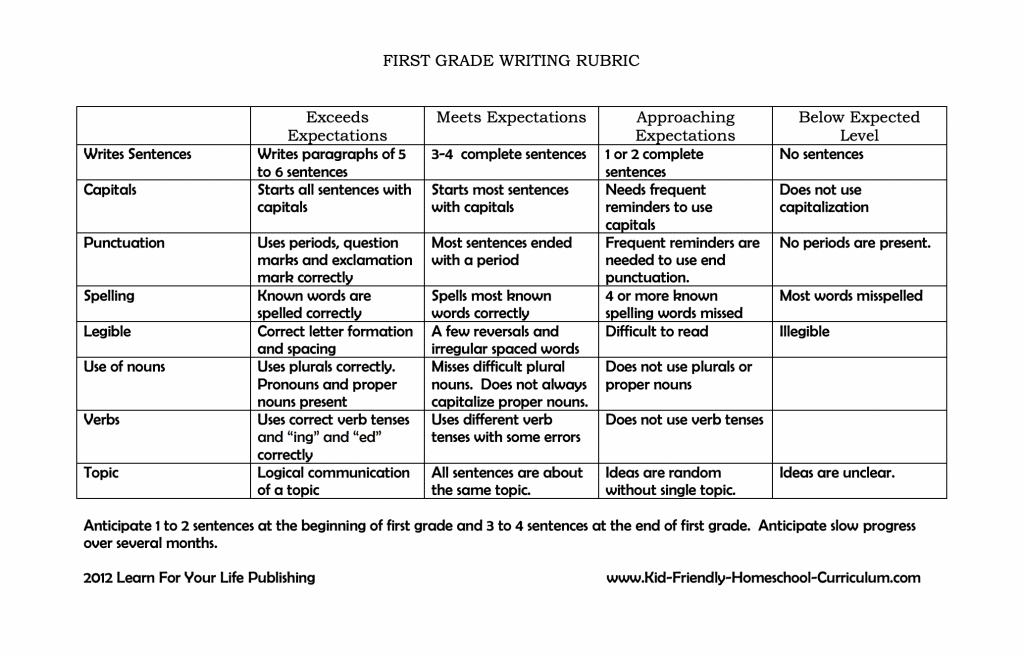
This rubric helps students focus on elements of grammar, such as spelling, capitalization, and punctuation. It contains four levels of grading and gives examples of what it means to fulfill each category.
- Ice Cream Stories Project with Rubric From Sarah’s Teaching Snippets
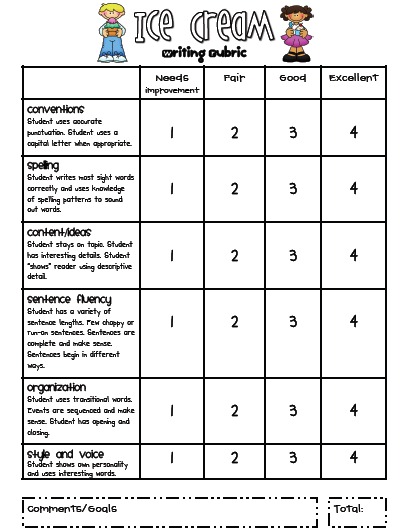
Use this story rubric to go over all of the key elements introduced in writing and guide your student to a final assignment that combines them all. Students are asked to demonstrate an understanding of the story, form their own opinions, write with correct grammar and punctuation, and experiment with adding their own voice to their writing.
- Writing Editing Checklist By Nancy Vandenberge
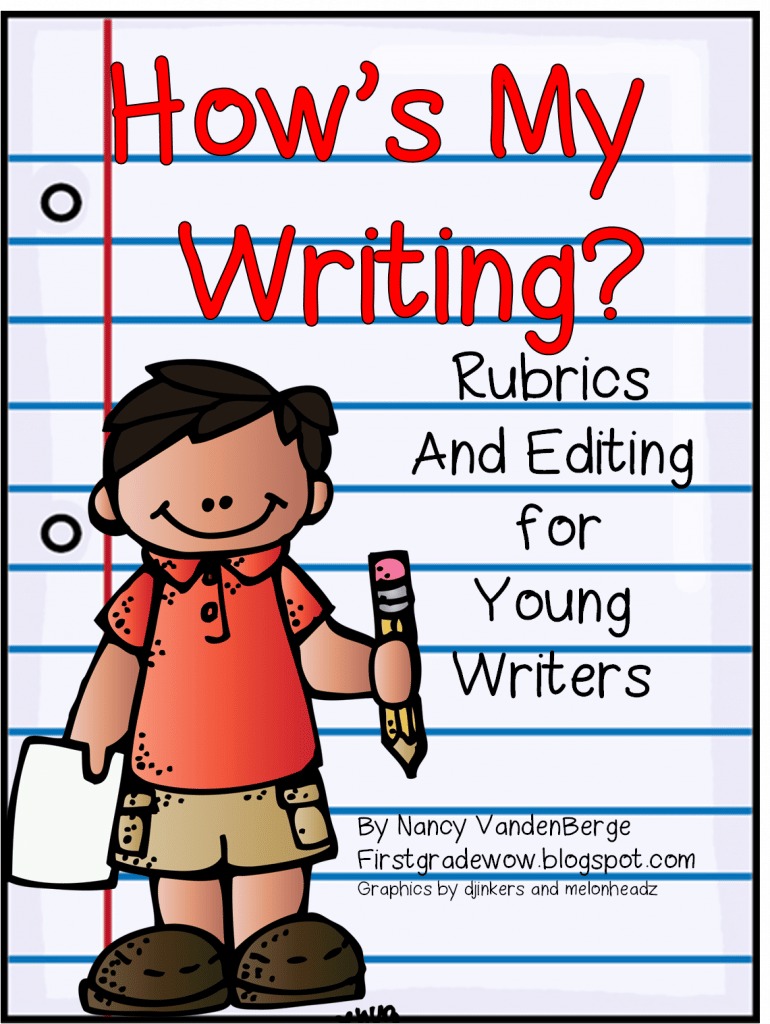
This easy rubric allows students to grade themselves, but it can also be used while they are writing as a guide. With only “yes” or “no” options, the criteria to be met is simple and reinforces the foundations of writing such as legibility, using proper spacing, punctuation, and writing on topic.
- Peer Review Editing Checklist From Fun In First
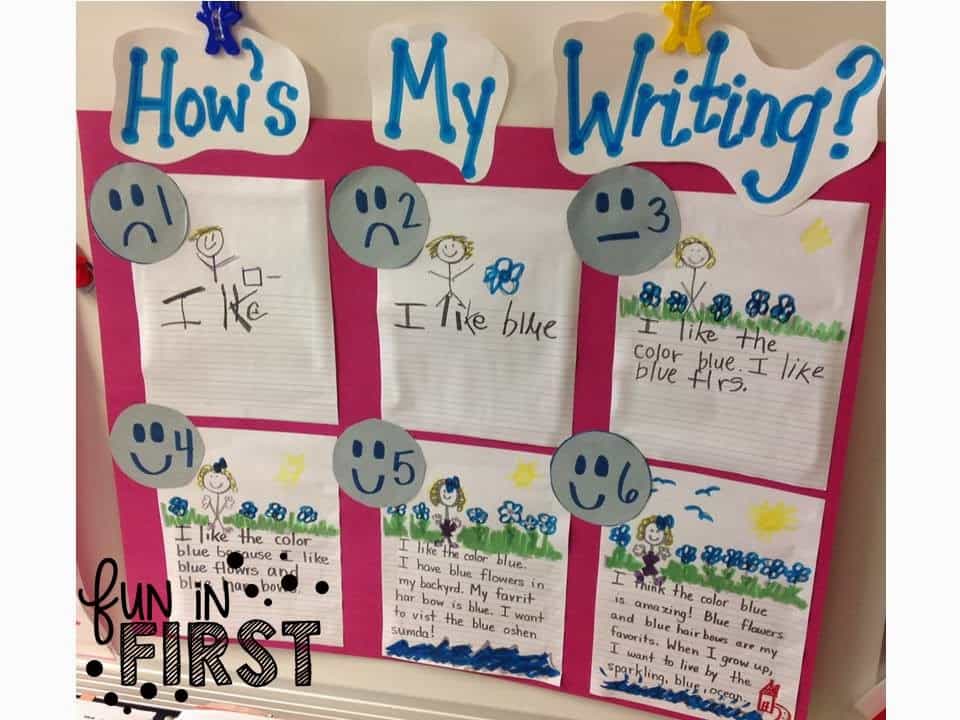
This checklist rubric is designed to be used independently by the student to go over their own work, and then by a fellow student who can practice recognizing correct grammar, spelling, and flow in writing that is not their own.
- Built-in Rubrics From Firstieland
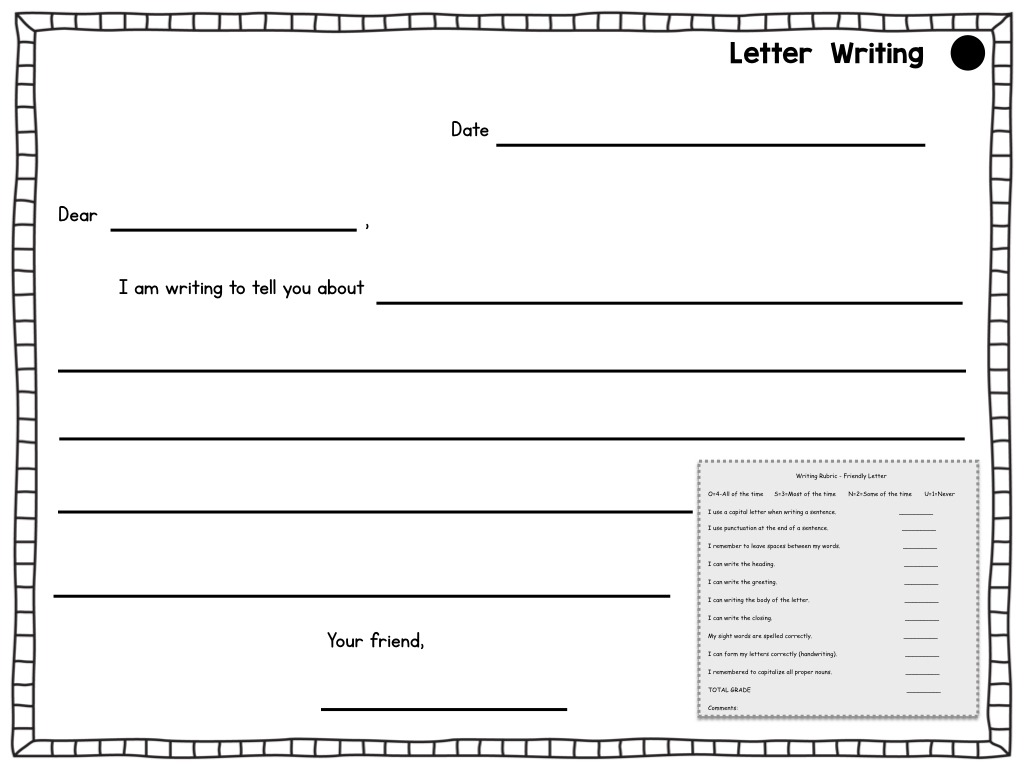
The next rubric on our list streamlines the grading process by including the rubric on the assignment page to make grading easier and also allow students to reference the criteria. This topic is letter writing so it focuses on structure as well as all basic writing concepts.
- Reading And Writing Rubric From Mrs. Jump’s Class
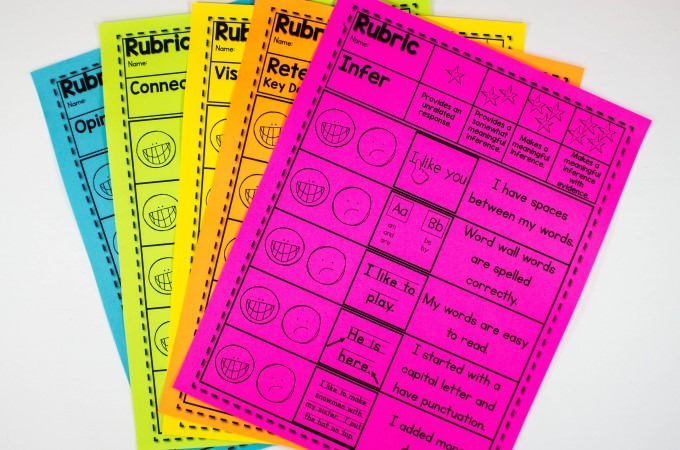
This next set of rubrics are student friendly and designed to be used on a written response related to each of the 15 reading comprehension strategies .
The top portion is for you to grade the content of their responses and the lower portion is for the students to reflect on the quality of their writing and how well they meet the fundamentals.
- Dinosaur Research Report, Editing Checklist, And Rubric From The Teacher Team
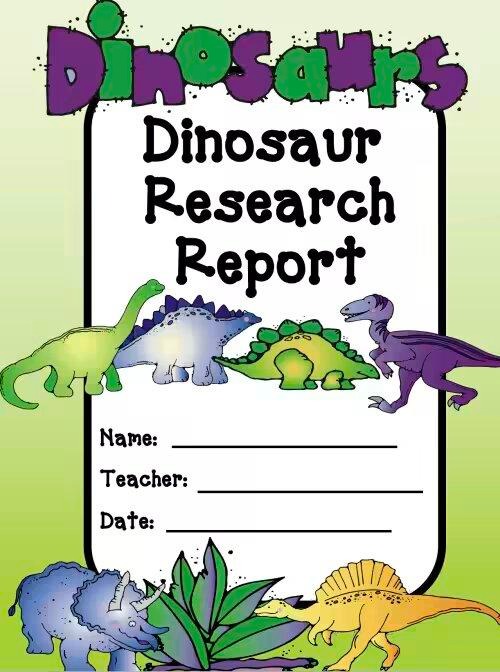
This comprehensive research project was developed for students of various grades and writing abilities. You know your students best, so remove any pages that do not make sense for your students.
Included are the following that you may find helpful as a supplement pieces:
• An additional information page to be used to supplement any other parts of the report
• Blank page that can be copied to expand the report if needed
• Two different formats for note-taking pages, depending on how you want them to take notes or if you want to give them a choice.
• Rubric for the written report
• Editing/Revising Checklist to have students check their work themselves
- Strengthen Your Writing Revision And Editing Activity By Have Fun Teaching
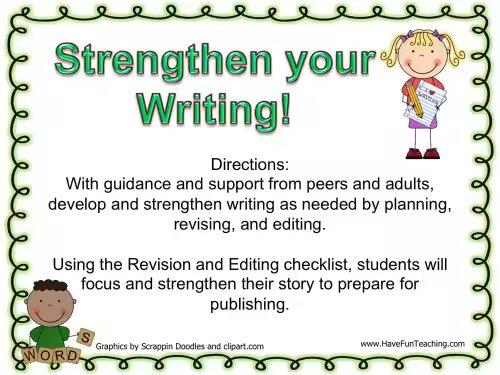
This activity helps students develop their writing skills by going through all the stages of writing development including outlining, revising, and editing using a checklist rubric.
- Writing Concepts Rubric From Ahisd
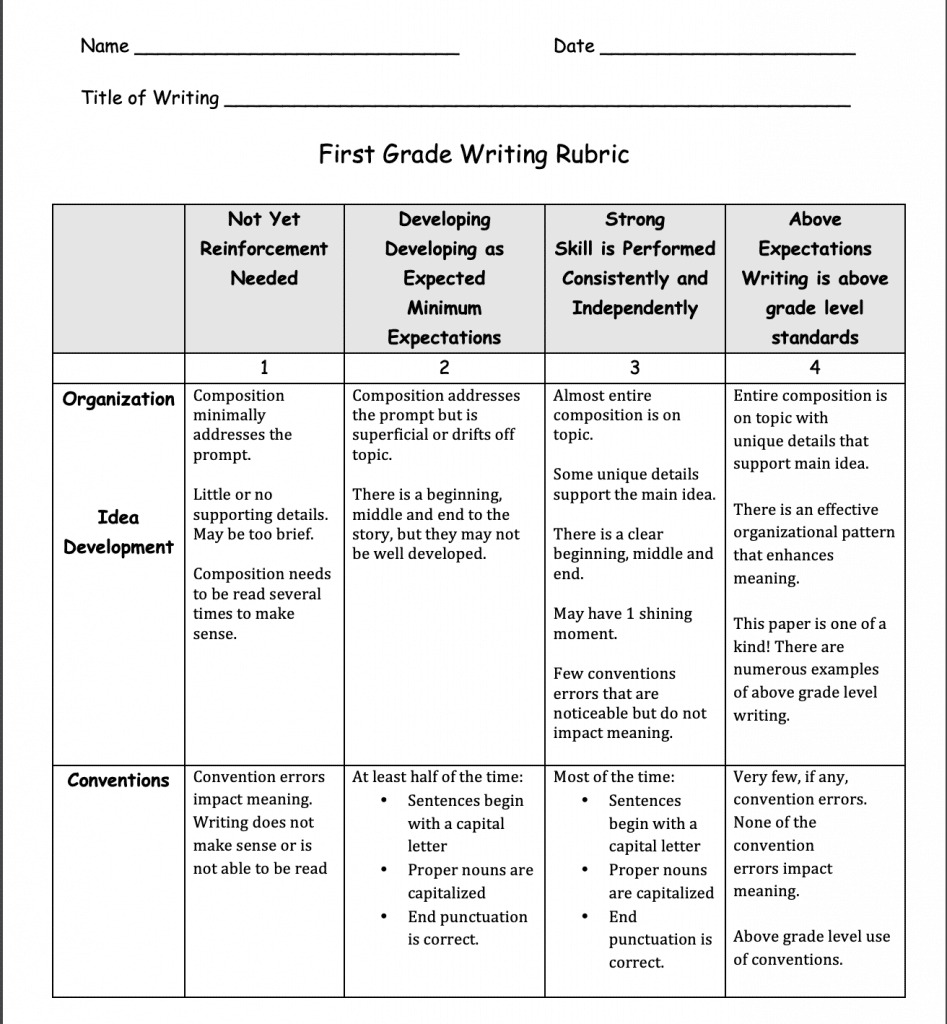
Organization, idea development, and writing conventions are the focus of this rubric designed for teacher use, but also can be used to explain the expectations of the assignment to the student.
Each criteria has four levels of completion with examples, along with a suggestion of where the student is at with the concept to determine if they need more help in that area.
A writing rubric at this level will contain three main categories.
First is the prompt that they will be writing about, which will sometimes include the length of the assignment. Next are the criteria items—what the students need to include and what they will be graded on. The third category is the grading scale that shows how to earn the most points for each section and what will cause students to earn little to no points. These create the structure and format that allows you to assess their work using a 1st grade writing rubric.
About the Author Kelalani Kimiko was born to a multi-generational Japanese American household in Las Vegas, NV. Her upbringing was heavily influenced by the strong family cultural traditions of her ancestors. The seemingly endless stream of new babies and young children in her home caused her to gravitate towards a caretaker role where she greatly enjoyed being a part of how they learn and grow. As a teen she assisted in homeschooling her younger sibling after a diagnosis of autism. This steered her towards her first college major in education where she ultimately found her calling as a writer. She now combines her passions to promote the sharing and access of information across a variety of subjects.
Share Article:
Download unlimited teaching resources, join free today, teach simple.
The team behind Teach Simple is a small but dedicated group who are passionate about education and making a positive impact on the lives of teachers and students.
We have a lot of interesting articles and educational resources from a wide variety of authors and teaching professionals.
19 Go-To First Grade Phonics Worksheets
21+ first grade poems to teach kids about poetry.
Last Updated on August 31, 2023 by Teach Simple
Writing Rubrics for Primary Grades
If you’ve been following my blog, you probably figured out that I love using writing rubrics ! Today I want to share what a writing rubric is , why I like using them and share links to 3 free writing rubrics you can use.
What is a writing rubric?
I think of a rubric as a performance scoring guide. Rubrics lay out expectations of an assignment by listing criteria and levels of quality on a scale.
For example, on a writing rubric the criteria may be “Uses punctuation accurately” or “Begins with capital letter.”
The scale (level of quality) may be
- needs improvement; good; excellent or
- beginning; developing; accomplished
I don’t claim to be an expert by any means, but I do love using them!
Why I Like To Use Writing Rubrics
I like to use writing rubrics because they help me to be consistent when grading student writing. Rubrics also set up my expectations to help me, my students and parents see what I am looking for.
Making/using rubrics helps me to really think about what I expect from my students as writers.
I’ve been teaching first grade for 6 years now, so I’ve read a lot of student writing! I’ve experienced so many different levels of writing and writing styles. I realized early on that there isn’t just “good writing” and “not so good writing” .
Some kids are excellent with their conventions/neatness which sometimes led me to give them a better grade even if the actual writing wasn’t that spectacular.
On the flip side, you may have a student with horrible developing handwriting and complete lack of conventions (including most words spelled incorrectly), but they have amazing voice or interesting ideas . They are often overlooked as “bad writers” just because their writing looks so bad.
Using rubrics not only assisted me in communicating these strengths and areas of improvement, but it also allowed me to celebrate a student’s gifts as a writer.
What I’ve Found
When I started using rubrics I found that my grading was more fair and consistent. I also found that I was able to set goals more easily for my students because it was easier to see where they didn’t quite meet my expectations.
Parents are also able to easily see (and hopefully understand more completely) where their child is at as a writer and what they can work on.
And let’s not forget the time I saved with using rubrics! I don’t feel the need to write as much on each paper because the rubric explains a lot of it.
If you teach writing, think about what you look for in your writers.
- Have you set those expectations for your students and for yourself?
- Do you look for the same thing in every writing piece or do you have a special focus for certain writing pieces?
- Do you communicate these expectations and goals to your students?
Free Writing Rubrics
I’ve also have some theme specific writing prompts and rubrics that you should check out.
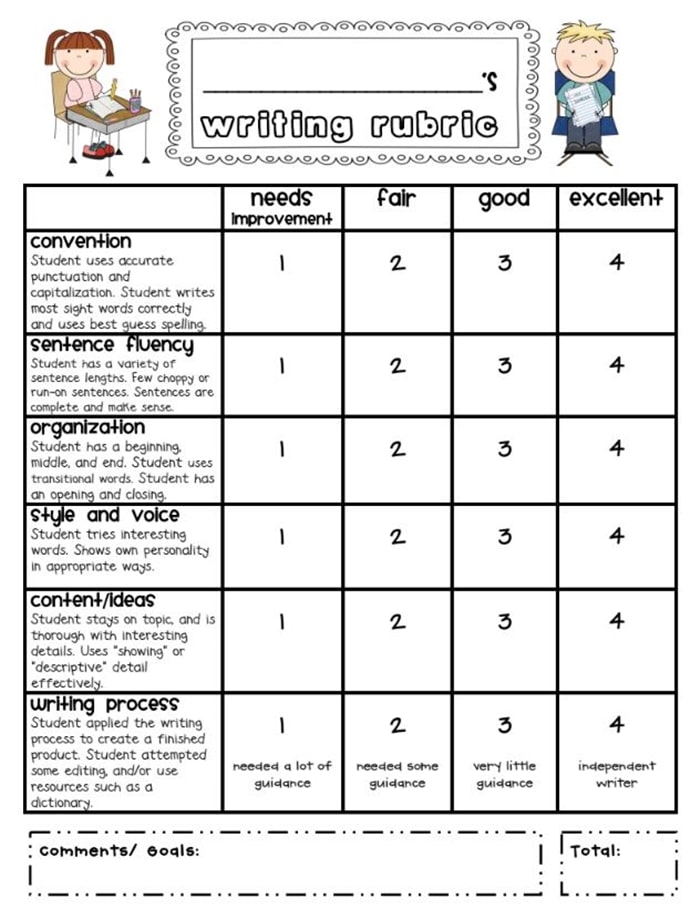
My end of year writing rubric focuses on content that has a beginning, middle and end. Scores are 1-4 and students receive scores in: conventions, sentence fluency, organization, style/voice, content/ideas and the writing process.
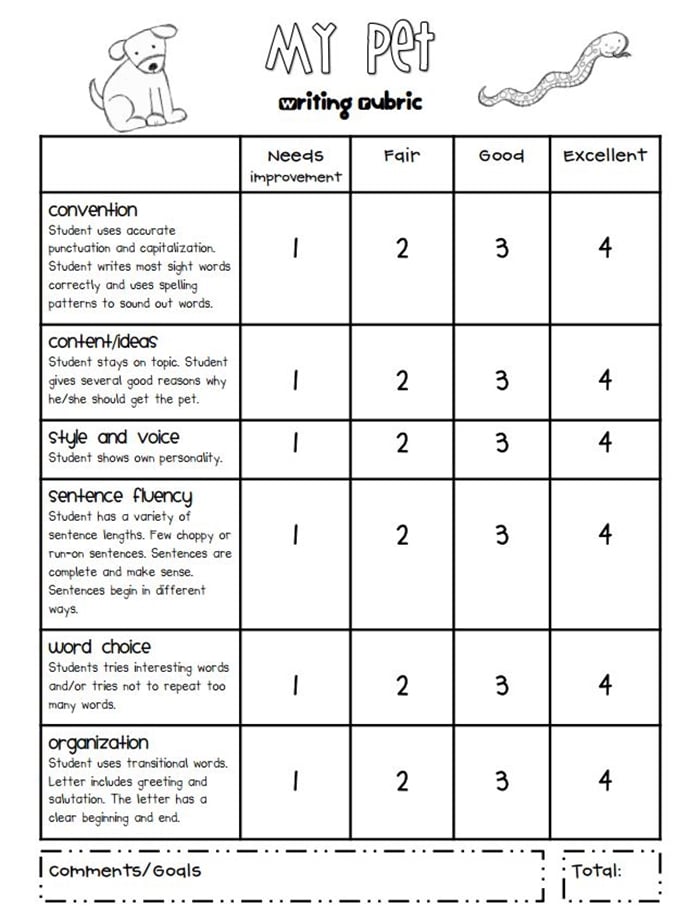
A fun, anytime of the year writing prompt is my Pet letters persuasive writing . Students brainstorm and write a letter titled “My Pet.”
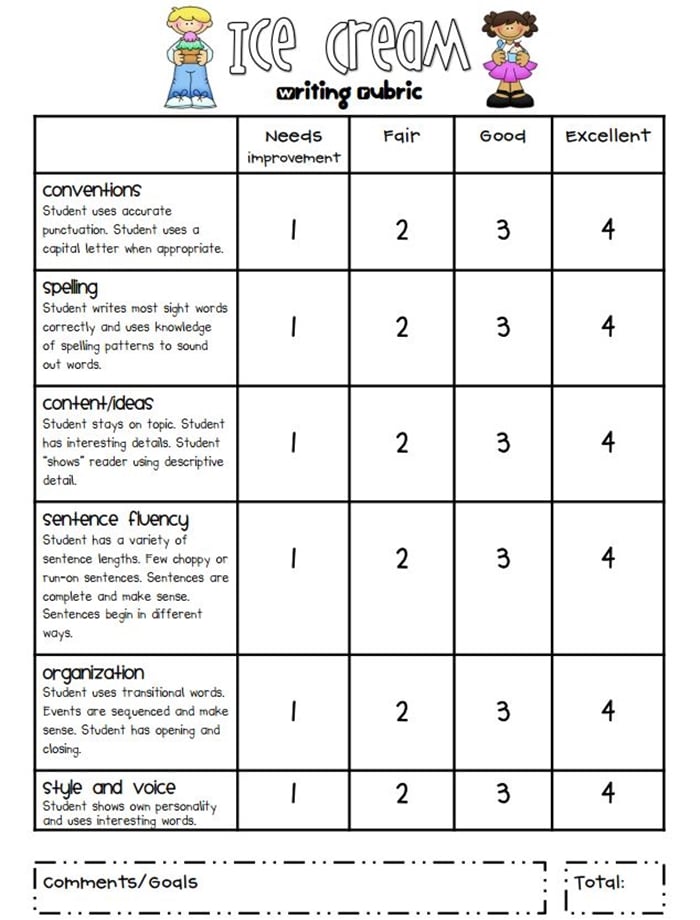
Work on taking a big topic and zoom in on a small moment (like Lucy Calkins teaches) with this Ice Cream small moments writing graphic organizer, writing paper and rubric.
Continue Reading On My Blog
– Originally posted on Teaching Blog Addict
| Submit Your Tip |
More writing.
- 5 Free Printable Spring Writing Templates
- If I were President… Prompt Writing for Kindergarten
- Tooth Fairy Writing Prompt {Dental Health Month}
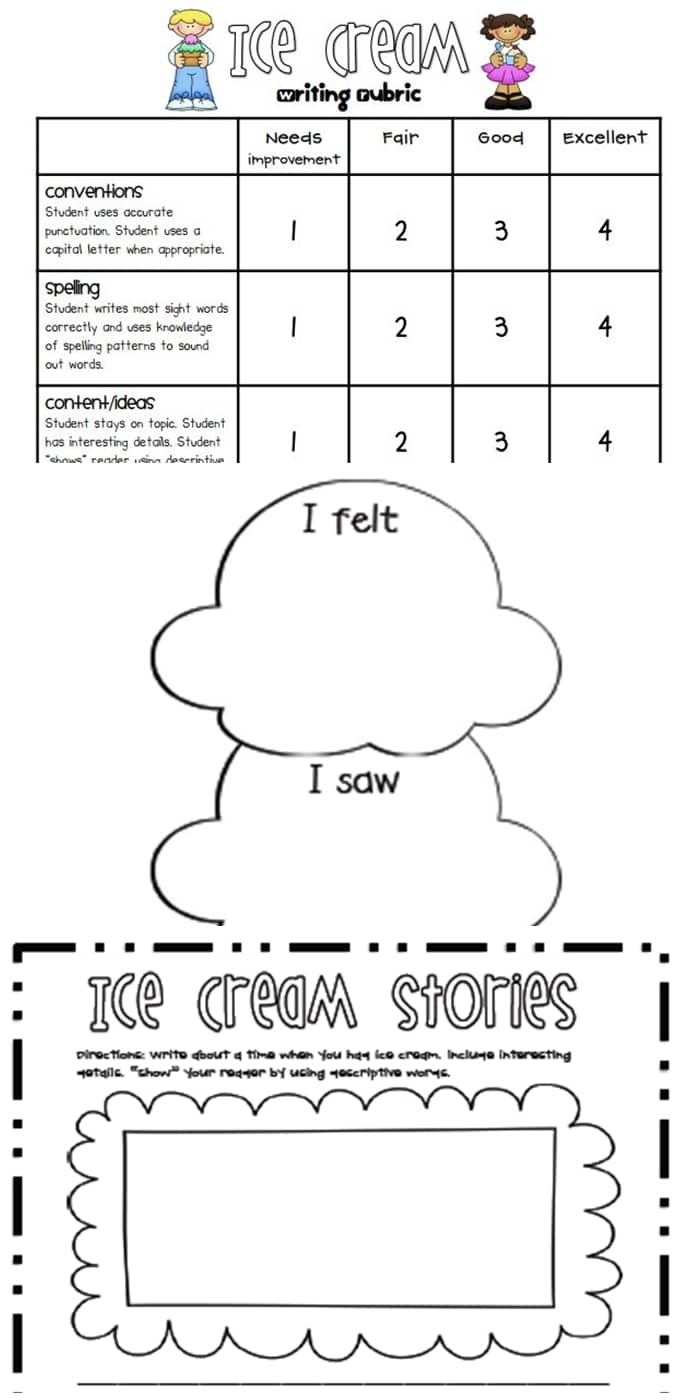
I am a wife, mother of two boys, and reading teacher (formerly a first grade teacher) from Oregon. I love creating and finding engaging activities to get my students excited about learning.
- Home
- Writing Rubrics
- 1st Grade Writing Rubric
First Grade Writing Rubrics
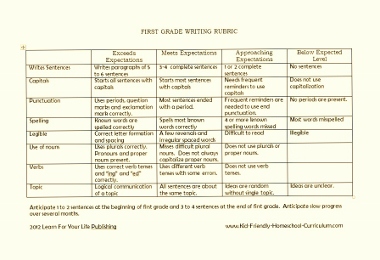
Using the First Grade Writing Rubric
Other ideas for 1st grade writing rubrics, print the first grade writing rubric.

Make Writing A Blast!
K through 2nd, first grade fun, ready to use resources.

Top of This Page

About Our Site
Hands-on learning.

Our Site At A Glance
- Ordering Information
- Privacy Statement
By Karen Newell Copyright© 2009 - 2023 Learn For Your Life All Rights Reserved
New Pages Site Map Contact About Us
Get free SOR reading tips!
Sarah's Teaching Snippets
K-2 Science of Reading Educational Resources
Writing Rubrics for the Primary Grades
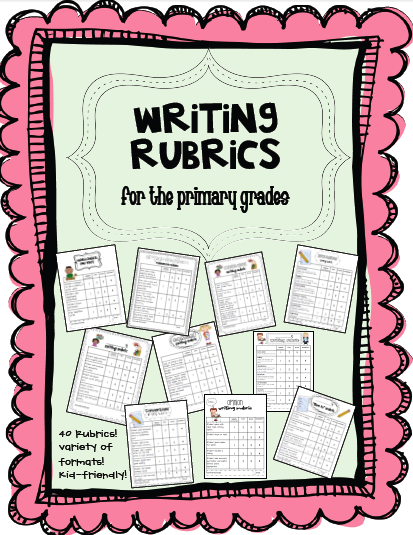
Latest on Instagram

Latest on Pinterest

Latest on Facebook
2 years ago

Share on Facebook Share on Twitter Share on Linked In Share by Email

In order to continue enjoying our site, we ask that you confirm your identity as a human. Thank you very much for your cooperation.
- Join for Free

- Back to Listing
- Current: Common Core Standards
- Current: English Language Arts (ELA)
- Current: Grade 1
- Current: Writing
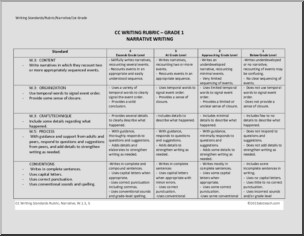
Common Core: Writing Standards Narrative Rubric (grade 1)
This rubric is aligned with the common core writing standards; narrative writing for grade 1. use this with any of your writing assignments or assessments. cc: w.1.3-5, resource tags, similar resources.

Punctuation Poster: Capitalization Rules
Media Type PDF

Unit: Writing a News Article (middle school)
/ Writing for Literacy

Birthday (elem) Color and Write
/ Color and Write
New to abcteach?
Sign up to Download From 49,000+ Resources
TERMS OF SERVICE
1.1. The abcteach.com public and membership websites have been in operation since about 2000, providing access to downloadable materials for educators and parents.
1.2. The abcteach.com website is owned and operated by ABCTEACH LLC, a Michigan limited liability company. The names "abcteach" and "abctools" are registered trademarks. As used in this Terms of Service and Privacy Policy, "We" and "abcteach" and "Site" refer to all websites and services, whether public or membership, operated or offered by abcteach. Currently we operate under the following base urls: abcteach.com, and members.abcteach.com.
1.3. abcteach is for use by parents, educators, and others over the age of 18. The materials made available by abcteach are intended to be used with and for children and students, among others, at the discretion and under the control, supervision, and direction of the parents, educators, and other adults who are visitors, members, or subscribers to the Site. As used in this Terms of Service and Privacy Policy, "you" refers to such visitors, members, or subscribers.
1.4. By using the Site, you accept and agree to be bound by the following terms. We may, solely at our discretion, modify or revise these terms and conditions at any time by updating this web page, and you agree to be bound by these modifications or revisions. You should visit this page periodically to review the terms. From time to time, we will require that you confirm your agreement to the terms.
2.1. Sharing of password or login information is strictly prohibited. Suspension of account access may result from sharing of this information.
2.2. Worksheets and other materials available on abcteach, including clip art, may be printed or otherwise duplicated for use in your home or your classroom(s). Clip art on abcteach is intended as a resource for you in creating lessons and teaching materials and the like within your permitted usage of the Site. If you are a paid member, our clip art may be: placed on another publication as clip art, or distributed individually on a third-party authorship site, if you as a member give abcteach credit for any clip art intended to be redistributed. Giving credit to abcteach requires you to mention our name and website on any publications in which you use our clip art for redistribution. You may not use our clip art in the design or content of another website; or distribute our clip art electronically or by email or text or by any other media or social media. Furthermore, Members are prohibited from packaging our clip art into their own collections for sale, each clip art illustration used for resale, must be used individually, again giving credit to abcteach.com.
2.3. The abcteach copyright appears on every page; we require that this copyright remain in place on all reproductions.
2.4. Except as provided in section 2.7 below, all of the worksheets and other materials available on abcteach are intended for non-commercial educational purposes.
2.5. You may place links to abcteach from your own education website; however, copying or uploading abcteach resources and documents to your own site is a copyright violation and will be treated as such. Deep linking is not permitted. (A "deep link" is a hyperlink that bypasses a website's home page and takes the user directly to an internal page. For example, instead of linking to the home page of a newspaper, a deep link might take the user directly to a newspaper article within the site.) At abcteach, linking directly to a content page rather than the home page or a directory page is considered deep linking and is not permitted.
2.6. Under no circumstances may any of the documents, resources, clip art, worksheets, or other materials (including text, images, or website design) on abcteach be re-sold or re-distributed without the express permission of abcteach.
2.7. We may permit you to use abcteach materials in your creation and sale of educational materials produced by you individually, on sites such as Teachers Pay Teachers, upon your payment of a separate additional fee and your submission of an executed agreement as stated elsewhere on the Site. This would offer you a limited non-exclusive license to use abcteach materials within the scope of the separate agreement; such permission being terminable at any time by abcteach in our sole discretion; you agree that you will immediately cease the use, or offering for sale, or sale, of any such educational materials in the event we take such action. By using any materials, you acknowledge that other members may be acting under similar permissions and creating similar materials.
2.8. If you desire to use abcteach materials in any other manner, or if you have any questions about permissible uses that are not specifically addressed here, you should address your inquiry to support@abcteach.
3. Responsibility for User-Created Content
3.1. The Site has tools and other features, including but not limited to abctools, the abcWorkshop, and other applications, that facilitate the creation of user-generated word lists, puzzles, worksheets, and other resources. The user-selected content of such user-generated materials is your sole responsibility and not that of abcteach. If any other person, including children or students, uses your member account to access or use abctools or abcWorkshop or any other abcteach application, you agree to and assume responsibility for any such materials.
3.2. You are responsible for assuring that any materials, lists, documents or other documents created with this abcteach tools, resources, and applications, are appropriate, and you will not cause or permit the tool to be used to create harmful, vulgar, threatening, or otherwise inappropriate content.
3.3. If you share an abcteach document or user-generated document, by any means including any of the sharing features or applications or tools found on the Site, you are solely responsible for the content of the transmitted materials or documents.
3.4. If any sensitive materials or information or documents from the Site, or user-generated materials, are shared or provided to a child under the age of 13, you agree that you will first obtain express consent from the child’s parent or guardian(s) to share such documents with the child, and obtain permission and/or releases for the use of any user-generated information concerning the child or the child’s family that may be contained in such documents.
4. License Grant to abcteach
By posting information on or through our Sites, you automatically grant abcteach a royalty-free, perpetual, irrevocable, non-exclusive license to use, reproduce, modify, publish, edit, translate, distribute, perform, and display the information, alone or as part of other works, in any form, media, or technology, whether now known or hereafter developed, and to sublicense such rights through multiple tiers of sub-licensees.
5. Charges, Payments, and Subscription Charges and Cancellation
5.1. We currently offer one-year and two-year individual memberships for single payment, and a monthly plan with payment of an initial setup charge followed by monthly payments. We also offer group memberships to schools, districts, and groups, the details of which are described separately. The terms and prices of individual memberships as they may exist from time to time are stated on the Site. We may choose to offer different membership plans. By becoming an abcteach member, you agree that we may renew your subscription automatically for the same subscription terms on the day your previous subscription ends, and you authorize us to charge you for the subscription term, unless you cancel your account prior to its renewal date through the cancellation process, as provided in sections 5.4 – 5.6 below.
5.2. We use third-party payment providers (such as CyberSource and other providers) for all credit and debit card and PayPal and similar transactions. We do not collect or retain information about user’s credit or debit cards or PayPal accounts or other payment mechanism, all of which information is retained and used according to secure procedures of the third-party payment providers.
5.3. Depending on the plan you choose, you will be charged a fee automatically through our renewal system. By becoming an abcteach member, you are agreeing that we are authorized to charge you the membership fee associated with the type of membership (monthly, yearly, or bi-yearly) that you chose during registration. You agree that we are authorized to charge you the membership fee at the then-current rate to the payment method you provided during registration. Please note that prices and charges are subject to change without notice. Fees each month may be modified using credit card, debit card, PayPal, or other payment methods available through your account. This includes: promotional discounts advertised in our weekly member newsletters, or on-brand promotional ads. Each renewal payment will take place on or about the anniversary of the original date of account registration. If all eligible payments methods we have on file for you are declined, you must provide us a new payment method promptly or your membership will be canceled. If the renewal of your membership fails for any reason, we will attempt to process your renewal for a period up to thirty (10) days.
5.4. Membership Cancellation. You may cancel your membership any time by visiting Your Account and adjusting your settings. If you choose to cancel your subscription or fail to pay any fees, we may stop your membership. If you cancel your membership or are no longer a paid user, you have the option to continue use as a free user.
5.5. UNLESS YOU NOTIFY US BEFORE A SUBSCRIPTION PAYMENT THAT YOU WANT TO CANCEL OR DO NOT WANT TO AUTO RENEW, YOU UNDERSTAND THAT YOUR ABCTEACH MEMBERSHIP WILL AUTOMATICALLY CONTINUE AND YOU AUTHORIZE US TO COLLECT THE THEN-APPLICABLE MEMBERSHIP FEE AND ANY APPLICABLE TAXES, USING ANY/ ALL ELIGIBLE PAYMENT METHODS WE HAVE ON RECORD FOR YOUR ACCOUNT.
5.6. ALL FEES ARE NON-REFUNDABLE. Termination of your account may include removal of your access to all offerings of the website; including password, information, files, and user content associated with your account, and barring any further use of abcteach membership services and tools.
5.7. We may terminate your membership at our discretion without notice. If we do so, we will provide a prorated refund based on the number of days/months remaining in your membership. However, we will not give any refund for termination related to conduct that we determine, in our discretion, violates these terms or any applicable law, involves fraud or misuse of the membership agreement, or is harmful to our interests or another use.
5.8. By applying for membership, you represent that: you are over the age of 18; that you are competent to enter into a contract; that you are the owner of, or authorized by the owner, to utilize the credit or debit card or other payment mechanism used for the payments; that the information you submit about your location and contact information is correct; that you will promptly notify us of any change in your email address or payment mechanism; and that you have read and agree with the provision of these Terms of Service and Privacy Policy. We reserve the right to decline any application for membership, or to change the terms and/or conditions of any account at any time, for any reason or no reason.
5.9. We may offer, on the Site or through other means, and broadly or to limited groups of potential members, promotional prices, seasonal pricing, free trial memberships, or other special prices and terms. Such promotional activities do not affect existing memberships, and abcteach will not provide or offer such promotional prices to existing members or users, and will not provide refunds or rebates or other price protections.
PRIVACY POLICY
- This Privacy Policy applies to all websites, public and membership, operated by abcteach. By providing information to us or using the Site, you agree to the terms and conditions of this Privacy Policy.
- abcteach will not knowingly send marketing or other messages to children. Nor does abcteach knowingly permit children to communicate through the Site or to provide personal information to us.
- Member Registration Information. abcteach collects and stores certain information that members, subscribers, and users of the Site are required to provide in registering for or subscribing to the Site. Such information can vary depending on the nature of the account, and may include personal identifying information such as name, email address, school or district information, physical address, etc.
- Electronic Payment and Credit Card Information. abcteach currently utilizes third party providers to handle electronic and credit card payment transactions, and abcteach does not itself collect or store information concerning such payments. If you want to review the privacy policies of such third party service providers, please request contact information for those providers by contacting abcteach at the one of the addresses given below.
- Payments by Check or Bank Transfers. When abcteach receives payments by check or bank transfers, most often from schools and districts, we collect and maintain information about such payments.
- Information about Usage of the Site. We collect information on usage of the Site, which may include pages visited, and downloaded, time on site, identifying information about the uses, etc.
- "Cookies" and other Tracking and Technology Information. abcteach and our third party service providers may use cookies and other technologies to retrieve and store information about Site usage, browser type, IP addresses, pages visited, date and time of usage, etc.
- Information derived from use of ABCTOOLS and abcWorkshop and other abcteach services and products. If a member or others introduce information into the system by utilizing any of abcteach's services or products including ABCTOOLS or abcWorkshop, it is possible such information will be gathered or stored. You represent, by using or permitting such use of the Site by yourself or by others or by children, that any personal information that may be included in such usage is used with permission and authority, including parental consent, and that you represent to us and our service providers that we are permitted to use the information.
- Registration and use of the Site.
- Payment for membership or subscriptions or products or services.
- Internal business purposes.
- Newsletters distribution.
- Special offers and marketing relating to abcteach.
- Customer service and problem resolution.
- Enforcement of abcteach intellectual property rights and membership terms and conditions.
- Responding to legal process or governmental requests for information.
- As required under applicable law or regulations.
- In connection with possible future transactions affecting abcteach, such as the sale of the Site, or mergers, sales of assets, reorganizations, etc. , in which event all or a part of stored information including member and user information may be transferred to a successor business or website operator.
- As we may require in connection with specific services and products, current or future.
- Children's Privacy Notice Usage of the Site is limited to adults and children are not permitted to use the Site. Nor do we request that any personal information be provided by or about children including those in your family or classroom. Children under the age of 13 are not requested to provide any personal information while using the Site. However, to comply with the Children's Online Privacy Protection Act, if it is brought to our attention that children under 13 years of age intend to use the Site, we reserve the right to require you to seek the consent of Parents in order for children under 13 years of age to use the Site in any manner that could result in the submission of personal information, and to terminate your access to the Site if such consent(s) is not obtained or submitted timely. If a member, teacher, or parent uses the Site or any of its tools or products in a manner by which a child could disclose personal information to others, it shall be a representation by that member, teacher or parent that the child's parent has expressly authorized such use and has expressly authorized abcteach to collect, store, and distribute the child's personal information to other users of the Site. Additionally, such personal information may be collected or stored by the cookies and other technologies described above. Parents may contact abcteach at the addresses provided below.
- Security abcteach attempts to secure its information and that of others by using reasonable safeguards and procedures. However, no internet or electronic data communication, transmission or storage system can be guaranteed to be completely secure. For that reason, abcteach cannot and does not guaranty the security of information transmitted to or shared with us. You use the Site and provide and share information at your own risk. If you have questions or concerns, you should not submit or share personal information or other sensitive information.
- Links to Other Sites abcteach does not ordinarily link to other websites. If such links are used, those websites or applications will be not be covered by this Privacy Policy. Users should review privacy policies of such sites and applications.
- Consent to Transfer of Information to the United States and to the Application of U.S. Law and Jurisdiction. abcteach is operated and managed by ABCTEACH LLC from within the United States. Neither the Site nor its staff nor its owner intend to be governed or subjected to the laws or jurisdiction of any other country other than the United States. Information provided to abcteach or to its third party service providers will be processed, stored, and used in the United States and other countries where the service providers or abcteach or affiliates may have operations. By using the Site, you irrevocably consent to the transfer of information to the United States, or to other countries other than your country of residence, and to the storage and use of the information in the United States. You acknowledge and agree that, to the extent that the laws of the United States differ from those of your country of residence, you consent to the application of the laws of the United States to your information and to the relationship between yourself and us, and you covenant and agree that you will not assert that other law is applicable. Any litigation or court proceedings of any nature concerning the relationship between you and abcteach, or to these terms and conditions, or to the Privacy Policy, or to any other matter relating to abcteach, shall be only and exclusively in the Circuit Court for Oakland County, Michigan, or the United States District Court for the Eastern District of Michigan, and you irrevocably consent to personal jurisdiction in such forums for any such litigation or proceedings.
- Indemnification and Hold Harmless You agree to indemnify, defend, and hold harmless abcteach, and all related parties and services, from any and all liability, penalties, losses, damages, costs, expenses, attorneys' fees, causes of action, or claims caused by or resulting indirectly from your use of our Sites.
- No Warranties Use of this service is on an "as-is" basis. ALL WARRANTIES, INCLUDING BUT NOT LIMITED TO IMPLIED WARRANTIES OF FITNESS FOR A PARTICULAR PURPOSE AND MERCHANTABILITY, ARE SPECIFICALLY DISCLAIMED. Any contact with any agents of this service, either in person or through electronic means does not create a warranty.
- Changes to Our Terms of Service and Privacy Policy We may change these Terms of Service and Privacy Policy at any time and such changes will become effective when posted to the Site. Your use of the Site following such the posting of any revised Terms of Service and Privacy Policy means that you accept the revised terms and policy.
- Contact Information Regarding Terms of Service and Privacy Policy Legal questions and concerns should be directed to our General Counsel, whose email address is [email protected] . Alternatively, first class mail addressed to General Counsel, ABCTEACH LLC, c/o Bodman PLC, 1901 St. Antoine Street, Detroit, Michigan 48226. Other questions should be directed to Customer Support, whose email address is [email protected] .
REVISION DATE: August 1, 2017
Writing Rubrics
Samples of Basic, Expository, and Narrative Rubrics
- Grading Students for Assessment
- Lesson Plans
- Becoming A Teacher
- Assessments & Tests
- Elementary Education
- Special Education
- Homeschooling
Rubric Basics
How to score a rubric, basic writing rubric, narrative writing rubric, expository writing rubric.
- M.S., Education, Buffalo State College
- B.S., Education, Buffalo State College
An easy way to evaluate student writing is to create a rubric . A rubric is a scoring guide that helps teachers evaluate student performance as well as a student product or project. A writing rubric allows you, as a teacher, to help students improve their writing skills by determining what areas they need help in.
To get started in creating a rubric, you must:
- Read through the students' writing assignment completely.
- Read each criterion on the rubric and then reread the assignment, this time focusing on each feature of the rubric .
- Circle the appropriate section for each criterion listed. This will help you score the assignment at the end.
- Give the writing assignment a final score.
To learn how to turn a four-point rubric into a letter grade, use the basic writing rubric below as an example. The four-point rubric uses four potential points the student can earn for each area, such as 1) strong, 2) developing, 3) emerging, and 4) beginning. To turn your rubric score into a letter grade, divide the points earned by the points possible.
Example: The student earns 18 out of 20 points. 18/20 = 90 percent; 90 percent = A
Suggested Point Scale :
88-100 = A 75-87 = B 62-74 = C 50-61 = D 0-50 = F
|
|
|
| Score | |
Establishes a clear focus Uses descriptive language Provides relevant information Communicates creative ideas | Develops a focus Uses some descriptive language Details support idea Communicates original ideas | Attempts focus Ideas not fully developed | Lacks focus and development | ||
Establishes a strong beginning, middle, and end Demonstrates an orderly flow of ideas | Attempts an adequate introduction and ending Evidence of logical sequencing | Some evidence of a beginning, middle, and end Sequencing is attempted | Little or no organization Relies on single idea | ||
Uses effective language Uses high-level vocabulary Use of sentence variety | Diverse word choice Uses descriptive words Sentence variety | Limited word choice Basic sentence structure | No sense of sentence structure | ||
Few or no errors in: grammar, spelling, capitalization, punctuation | Some errors in: grammar, spelling, capitalization, punctuation | Has some difficulty in: grammar, spelling, capitalization, punctuation | Little or no evidence of correct grammar, spelling, capitalization or punctuation | ||
Easy to read Properly spaced Proper letter formation | Readable with some spacing/forming errors | Difficult to read due to spacing/forming letter | No evidence of spacing/forming letters |
|
|
|
| |
Skillfully combines story elements around main idea Focus on topic is profoundly clear | Combines story elements around main idea Focus on topic is clear | Story elements do not reveal a main idea Focus on topic is somewhat clear | There is no clear main idea Focus on topic is not clear | |
| Characters, plot, and setting are developed strongly Sensory details and narratives are skillfully evident | Characters, plot, and setting are developed Sensory details and narratives are evident | Characters, plot, and setting are minimally developed Attempts to use narratives and sensory details | Lacks development on characters, plot, and setting Fails to use sensory details and narratives |
Strong and engaging description Sequencing of details are effective and logical | Engaging description Adequate sequencing of details | Description needs some work Sequencing is limited | Description and sequencing needs major revision | |
Voice is expressive and confident | Voice is authentic | Voice is undefined | Writer's voice is not evident | |
Sentence structure enhances meaning | Purposeful use of sentence structure | Sentence structure is limited | No sense of sentence structure | |
A strong sense of writing conventions is apparent | Standard writing conventions is apparent | Grade level appropriate conventions | Limited use of appropriate conventions |
|
|
|
| |
Informative with clear focus and supporting details | Informative with clear focus | Focus needs to be expanded and supporting details are needed | Topic needs to be developed | |
Very well organized; easy to read | Has a beginning, middle, and end | Little organization; needs transitions | Organization is needed | |
Voice is confident throughout | Voice is confident | Voice is somewhat confident | Little to no voice; needs confidence | |
Nouns and verbs make essay informative | Use of nouns and verbs | Needs specific nouns and verbs; too general | Little to no use of specific nouns and verbs | |
Sentences flow throughout piece | Sentences mostly flow | Sentences need to flow | Sentences are difficult to read and do not flow | |
Zero errors | Few errors | Several errors | Many errors make it hard to read |
- Scoring Rubric for Students
- Sample Essay Rubric for Elementary Teachers
- How to Make a Rubric for Differentiation
- Rubrics - Quick Guide for all Content Areas
- Tips to Cut Writing Assignment Grading Time
- Create Rubrics for Student Assessment - Step by Step
- Assignment Biography: Student Criteria and Rubric for Writing
- How to Create a Rubric in 6 Steps
- ESL Essay Writing Rubric
- What Is a Rubric?
- Rubric Template Samples for Teachers
- Grading for Proficiency in the World of 4.0 GPAs
- How to Calculate a Percentage and Letter Grade
- A Simple Guide to Grading Elementary Students
- Holistic Grading (Composition)
- How Dyslexia Impacts Writing Skills
- MyU : For Students, Faculty, and Staff
Writing Across the Curriculum
Ask a question
- Research & Assessment
- Writing Plans
- WEC Liaisons
- Academic Units
- Engage with WEC
- Teaching Resources
- Teaching Consultations
- Faculty Writing Resources

Creating Grading Rubrics for Writing Assignments
Pamela Flash
Establishing and discussing specific characteristics of success when an assignment is first distributed benefits both students and instructors. Creating grading rubrics, or grids, is a typical way to do this. Having received the criteria with an assignment, students are able to write toward specific goals. Later, when they look at their grades, they can see at a glance the strengths and weaknesses of their work. Instructors are able to grade according to customized descriptive criteria that reflect the intention of a specific assignment and won't change according to the hour of night or the amount of effort a particular student is suspected of expending. Rubrics can also save on grading time, as they allow instructors to detail comments on one or two elements and simply indicate ratings on others. Finally, grading rubrics are invaluable in courses that involve more than one instructor, as in team-taught or multi-sectioned courses, because they ensure that all instructors are measuring work by the same standards.
Step One: Identifying Criteria
The first step involved in creating assignment-specific rubrics is revisiting an assignment's intended outcomes. These objectives can be considered, prioritized, and reworded to create a rubric's criteria. If, for example, an instructor assigns a literature review hoping that students might become skilled at reducing complex texts down to pithy summaries, "concise summary" can be one of the grading criteria included in the rubric. Care must be taken to keep the list of criteria from becoming unwieldy; ten ranked items is usually the upper limit. In addition, to be usefully translated and used by students, criteria should be specific and descriptive. Criteria like "clear," "organized," and "interesting" don't mean much to students when they sit down to revise.
Step Two: Weighing Criteria
When criteria have been identified, decisions are made about their varying importance. Say, for example, that an essay is assigned by a geography professor who intends for students to become skilled at creating concrete and accurate observation-based descriptions, practiced in analyzing their data and in devising a land-use proposal, and able to create correctly-formatted, error-free prose. When creating a grading rubric for that assignment, the instructor will need to decide on the relative weight of each criterion. Is the error-free prose objective equal to the analysis objective?
Step Three: Describing Levels of Success
When the criteria have been set, decisions must be made about an assessment scale. Many instructors like to limit this section of the rubric to a three-point scale ("weak," "satisfactory," "strong"). Others may prefer to break this down into five or six levels, adding categories like "needs extensive revision," or "outstanding."
Step Four: Creating and Distributing the Grid
When the specific criteria and levels of success have been named and ranked, they can be sorted into a table (see samples below) and distributed with the assignment. Note that spaces are created for comments on each item and again at the end.
|
|
|
| |
| Insights and ideas that are germane to the assignment | |||
| Address of target audience | |||
| Choices and uses of evidence | |||
| Logic of organization and use of prescribed formats | |||
| Integration of source materials | |||
| Grammar and mechanics | |||
| Comments: | |||
| Final Grade ____ |
1=not present 2=needs extensive revision 3=satisfactory 4=strong 5=outstanding
| Insights and ideas
| 1 | 2 | 3 | 4 | 5 |
| Address of target audience
| 1 | 2 | 3 | 4 | 5 |
| Organization and use of prescribed formats
| 1 | 2 | 3 | 4 | 5 |
| Integration of source materials
| 1 | 2 | 3 | 4 | 5 |
| Grammar and mechanics
| 1 | 2 | 3 | 4 | 5 |
| Comments: | |||||
| Final Grade ____ |
- African American & African Studies
- Agronomy and Plant Genetics
- Animal Science
- Anthropology
- Applied Economics
- Art History
- Carlson School of Management
- Chemical Engineering and Materials Science
- Civil, Environmental, and Geo- Engineering
- College of Biological Sciences
- Communication Studies
- Computer Science & Engineering
- Construction Management
- Curriculum and Instruction
- Dental Hygiene
- Apparel Design
- Graphic Design
- Product Design
- Retail Merchandising
- Earth Sciences
- Electrical and Computer Engineering
- Environmental Sciences, Policy and Management
- Family Social Science
- Fisheries, Wildlife, and Conservation Biology
- Food Science and Nutrition
- Geography, Environment and Society
- German, Nordic, Slavic & Dutch
- Health Services Management
- Horticultural Science
- Hubbard School of Journalism and Mass Communication
- Industrial and Systems Engineering
- Information Technology Infrastructure
- Mathematics
- Mechanical Engineering
- Medical Laboratory Sciences
- Mortuary Science
- Organizational Leadership, Policy, and Development
- Political Science
- School of Architecture
- School of Kinesiology
- School of Public Health
- Spanish and Portuguese Studies
- Speech-Language-Hearing Sciences
- Theatre Arts & Dance
- Youth Studies
- New Enrollments for Departments and Programs
- Legacy Program for Continuing Units
- Writing in Your Course Context
- Syllabus Matters
- Mid-Semester Feedback Strategies
- Designing Effective Writing Assignments
- Writing Assignment Checklist
- Scaffolding and Sequencing Writing Assignments
- Informal, Exploratory Writing Activities
- 5-Minute Revision Workshops
- Reflective Memos
- Conducting In-Class Writing Activities: Notes on Procedures
- Now what? Responding to Informal Writing
- Teaching Writing with Quantitative Data
- Commenting on Student Writing
- Supporting Multilingual Learners
- Teaching with Effective Models of Writing
- Peer Response Protocols and Procedures
- Using Reflective Writing to Deepen Student Learning
- Conferencing with Student Writers
- Designing Inclusive Writing Assigments
- Addressing a Range of Writing Abilities in Your Courses
- Effective Grading Strategies
- Designing and Using Rubrics
- Running a Grade-Norming Session
- Working with Teaching Assistants
- Managing the Paper Load
- Teaching Writing with Sources
- Preventing Plagiarism
- Grammar Matters
- What is ChatGPT and how does it work?
- Incorporating ChatGPT into Classes with Writing Assignments: Policies, Syllabus Statements, and Recommendations
- Restricting ChatGPT Use in Classes with Writing Assignments: Policies, Syllabus Statements, and Recommendations
- What do we mean by "writing"?
- How can I teach writing effectively in an online course?
- What are the attributes of a "writing-intensive" course at the University of Minnesota?
- How can I talk with students about the use of artificial intelligence tools in their writing?
- How can I support inclusive participation on team-based writing projects?
- How can I design and assess reflective writing assignments?
- How can I use prewritten comments to give timely and thorough feedback on student writing?
- How can I use online discussion forums to support and engage students?
- How can I use and integrate the university libraries and academic librarians to support writing in my courses?
- How can I support students during the writing process?
- How can I use writing to help students develop self-regulated learning habits?
- Submit your own question
- Short Course: Teaching with Writing Online
- Five-Day Faculty Seminar
- Past Summer Hunker Participants
- Resources for Scholarly Writers
- Consultation Request
- Faculty Writing Groups
- Further Writing Resources
- Grades 6-12
- School Leaders
FREE 2024-25 Printable Teacher Calendar! 🗓️
15 Helpful Scoring Rubric Examples for All Grades and Subjects
In the end, they actually make grading easier.

When it comes to student assessment and evaluation, there are a lot of methods to consider. In some cases, testing is the best way to assess a student’s knowledge, and the answers are either right or wrong. But often, assessing a student’s performance is much less clear-cut. In these situations, a scoring rubric is often the way to go, especially if you’re using standards-based grading . Here’s what you need to know about this useful tool, along with lots of rubric examples to get you started.
What is a scoring rubric?
In the United States, a rubric is a guide that lays out the performance expectations for an assignment. It helps students understand what’s required of them, and guides teachers through the evaluation process. (Note that in other countries, the term “rubric” may instead refer to the set of instructions at the beginning of an exam. To avoid confusion, some people use the term “scoring rubric” instead.)
A rubric generally has three parts:
- Performance criteria: These are the various aspects on which the assignment will be evaluated. They should align with the desired learning outcomes for the assignment.
- Rating scale: This could be a number system (often 1 to 4) or words like “exceeds expectations, meets expectations, below expectations,” etc.
- Indicators: These describe the qualities needed to earn a specific rating for each of the performance criteria. The level of detail may vary depending on the assignment and the purpose of the rubric itself.
Rubrics take more time to develop up front, but they help ensure more consistent assessment, especially when the skills being assessed are more subjective. A well-developed rubric can actually save teachers a lot of time when it comes to grading. What’s more, sharing your scoring rubric with students in advance often helps improve performance . This way, students have a clear picture of what’s expected of them and what they need to do to achieve a specific grade or performance rating.
Learn more about why and how to use a rubric here.
Types of Rubric
There are three basic rubric categories, each with its own purpose.
Holistic Rubric

Source: Cambrian College
This type of rubric combines all the scoring criteria in a single scale. They’re quick to create and use, but they have drawbacks. If a student’s work spans different levels, it can be difficult to decide which score to assign. They also make it harder to provide feedback on specific aspects.
Traditional letter grades are a type of holistic rubric. So are the popular “hamburger rubric” and “ cupcake rubric ” examples. Learn more about holistic rubrics here.
Analytic Rubric

Source: University of Nebraska
Analytic rubrics are much more complex and generally take a great deal more time up front to design. They include specific details of the expected learning outcomes, and descriptions of what criteria are required to meet various performance ratings in each. Each rating is assigned a point value, and the total number of points earned determines the overall grade for the assignment.
Though they’re more time-intensive to create, analytic rubrics actually save time while grading. Teachers can simply circle or highlight any relevant phrases in each rating, and add a comment or two if needed. They also help ensure consistency in grading, and make it much easier for students to understand what’s expected of them.
Learn more about analytic rubrics here.
Developmental Rubric

Source: Deb’s Data Digest
A developmental rubric is a type of analytic rubric, but it’s used to assess progress along the way rather than determining a final score on an assignment. The details in these rubrics help students understand their achievements, as well as highlight the specific skills they still need to improve.
Developmental rubrics are essentially a subset of analytic rubrics. They leave off the point values, though, and focus instead on giving feedback using the criteria and indicators of performance.
Learn how to use developmental rubrics here.
Ready to create your own rubrics? Find general tips on designing rubrics here. Then, check out these examples across all grades and subjects to inspire you.
Elementary School Rubric Examples
These elementary school rubric examples come from real teachers who use them with their students. Adapt them to fit your needs and grade level.
Reading Fluency Rubric

You can use this one as an analytic rubric by counting up points to earn a final score, or just to provide developmental feedback. There’s a second rubric page available specifically to assess prosody (reading with expression).
Learn more: Teacher Thrive
Reading Comprehension Rubric

The nice thing about this rubric is that you can use it at any grade level, for any text. If you like this style, you can get a reading fluency rubric here too.
Learn more: Pawprints Resource Center
Written Response Rubric

Rubrics aren’t just for huge projects. They can also help kids work on very specific skills, like this one for improving written responses on assessments.
Learn more: Dianna Radcliffe: Teaching Upper Elementary and More
Interactive Notebook Rubric

If you use interactive notebooks as a learning tool , this rubric can help kids stay on track and meet your expectations.
Learn more: Classroom Nook
Project Rubric

Use this simple rubric as it is, or tweak it to include more specific indicators for the project you have in mind.
Learn more: Tales of a Title One Teacher
Behavior Rubric

Developmental rubrics are perfect for assessing behavior and helping students identify opportunities for improvement. Send these home regularly to keep parents in the loop.
Learn more: Teachers.net Gazette
Middle School Rubric Examples
In middle school, use rubrics to offer detailed feedback on projects, presentations, and more. Be sure to share them with students in advance, and encourage them to use them as they work so they’ll know if they’re meeting expectations.
Argumentative Writing Rubric

Argumentative writing is a part of language arts, social studies, science, and more. That makes this rubric especially useful.
Learn more: Dr. Caitlyn Tucker
Role-Play Rubric

Role-plays can be really useful when teaching social and critical thinking skills, but it’s hard to assess them. Try a rubric like this one to evaluate and provide useful feedback.
Learn more: A Question of Influence
Art Project Rubric

Art is one of those subjects where grading can feel very subjective. Bring some objectivity to the process with a rubric like this.
Source: Art Ed Guru
Diorama Project Rubric

You can use diorama projects in almost any subject, and they’re a great chance to encourage creativity. Simplify the grading process and help kids know how to make their projects shine with this scoring rubric.
Learn more: Historyourstory.com
Oral Presentation Rubric

Rubrics are terrific for grading presentations, since you can include a variety of skills and other criteria. Consider letting students use a rubric like this to offer peer feedback too.
Learn more: Bright Hub Education
High School Rubric Examples
In high school, it’s important to include your grading rubrics when you give assignments like presentations, research projects, or essays. Kids who go on to college will definitely encounter rubrics, so helping them become familiar with them now will help in the future.
Presentation Rubric

Analyze a student’s presentation both for content and communication skills with a rubric like this one. If needed, create a separate one for content knowledge with even more criteria and indicators.
Learn more: Michael A. Pena Jr.
Debate Rubric

Debate is a valuable learning tool that encourages critical thinking and oral communication skills. This rubric can help you assess those skills objectively.
Learn more: Education World
Project-Based Learning Rubric

Implementing project-based learning can be time-intensive, but the payoffs are worth it. Try this rubric to make student expectations clear and end-of-project assessment easier.
Learn more: Free Technology for Teachers
100-Point Essay Rubric

Need an easy way to convert a scoring rubric to a letter grade? This example for essay writing earns students a final score out of 100 points.
Learn more: Learn for Your Life
Drama Performance Rubric

If you’re unsure how to grade a student’s participation and performance in drama class, consider this example. It offers lots of objective criteria and indicators to evaluate.
Learn more: Chase March
How do you use rubrics in your classroom? Come share your thoughts and exchange ideas in the WeAreTeachers HELPLINE group on Facebook .
Plus, 25 of the best alternative assessment ideas ..

You Might Also Like

18 Smart Instructional Scaffolding Examples for Every Classroom
Tips and ideas for teachers and school leaders. Continue Reading
Copyright © 2024. All rights reserved. 5335 Gate Parkway, Jacksonville, FL 32256
Rubric Best Practices, Examples, and Templates
A rubric is a scoring tool that identifies the different criteria relevant to an assignment, assessment, or learning outcome and states the possible levels of achievement in a specific, clear, and objective way. Use rubrics to assess project-based student work including essays, group projects, creative endeavors, and oral presentations.
Rubrics can help instructors communicate expectations to students and assess student work fairly, consistently and efficiently. Rubrics can provide students with informative feedback on their strengths and weaknesses so that they can reflect on their performance and work on areas that need improvement.
How to Get Started
Best practices, moodle how-to guides.
- Workshop Recording (Fall 2022)
- Workshop Registration
Step 1: Analyze the assignment
The first step in the rubric creation process is to analyze the assignment or assessment for which you are creating a rubric. To do this, consider the following questions:
- What is the purpose of the assignment and your feedback? What do you want students to demonstrate through the completion of this assignment (i.e. what are the learning objectives measured by it)? Is it a summative assessment, or will students use the feedback to create an improved product?
- Does the assignment break down into different or smaller tasks? Are these tasks equally important as the main assignment?
- What would an “excellent” assignment look like? An “acceptable” assignment? One that still needs major work?
- How detailed do you want the feedback you give students to be? Do you want/need to give them a grade?

Step 2: Decide what kind of rubric you will use
Types of rubrics: holistic, analytic/descriptive, single-point
Holistic Rubric. A holistic rubric includes all the criteria (such as clarity, organization, mechanics, etc.) to be considered together and included in a single evaluation. With a holistic rubric, the rater or grader assigns a single score based on an overall judgment of the student’s work, using descriptions of each performance level to assign the score.
Advantages of holistic rubrics:
- Can p lace an emphasis on what learners can demonstrate rather than what they cannot
- Save grader time by minimizing the number of evaluations to be made for each student
- Can be used consistently across raters, provided they have all been trained
Disadvantages of holistic rubrics:
- Provide less specific feedback than analytic/descriptive rubrics
- Can be difficult to choose a score when a student’s work is at varying levels across the criteria
- Any weighting of c riteria cannot be indicated in the rubric
Analytic/Descriptive Rubric . An analytic or descriptive rubric often takes the form of a table with the criteria listed in the left column and with levels of performance listed across the top row. Each cell contains a description of what the specified criterion looks like at a given level of performance. Each of the criteria is scored individually.
Advantages of analytic rubrics:
- Provide detailed feedback on areas of strength or weakness
- Each criterion can be weighted to reflect its relative importance
Disadvantages of analytic rubrics:
- More time-consuming to create and use than a holistic rubric
- May not be used consistently across raters unless the cells are well defined
- May result in giving less personalized feedback
Single-Point Rubric . A single-point rubric is breaks down the components of an assignment into different criteria, but instead of describing different levels of performance, only the “proficient” level is described. Feedback space is provided for instructors to give individualized comments to help students improve and/or show where they excelled beyond the proficiency descriptors.
Advantages of single-point rubrics:
- Easier to create than an analytic/descriptive rubric
- Perhaps more likely that students will read the descriptors
- Areas of concern and excellence are open-ended
- May removes a focus on the grade/points
- May increase student creativity in project-based assignments
Disadvantage of analytic rubrics: Requires more work for instructors writing feedback
Step 3 (Optional): Look for templates and examples.
You might Google, “Rubric for persuasive essay at the college level” and see if there are any publicly available examples to start from. Ask your colleagues if they have used a rubric for a similar assignment. Some examples are also available at the end of this article. These rubrics can be a great starting point for you, but consider steps 3, 4, and 5 below to ensure that the rubric matches your assignment description, learning objectives and expectations.
Step 4: Define the assignment criteria
Make a list of the knowledge and skills are you measuring with the assignment/assessment Refer to your stated learning objectives, the assignment instructions, past examples of student work, etc. for help.
Helpful strategies for defining grading criteria:
- Collaborate with co-instructors, teaching assistants, and other colleagues
- Brainstorm and discuss with students
- Can they be observed and measured?
- Are they important and essential?
- Are they distinct from other criteria?
- Are they phrased in precise, unambiguous language?
- Revise the criteria as needed
- Consider whether some are more important than others, and how you will weight them.
Step 5: Design the rating scale
Most ratings scales include between 3 and 5 levels. Consider the following questions when designing your rating scale:
- Given what students are able to demonstrate in this assignment/assessment, what are the possible levels of achievement?
- How many levels would you like to include (more levels means more detailed descriptions)
- Will you use numbers and/or descriptive labels for each level of performance? (for example 5, 4, 3, 2, 1 and/or Exceeds expectations, Accomplished, Proficient, Developing, Beginning, etc.)
- Don’t use too many columns, and recognize that some criteria can have more columns that others . The rubric needs to be comprehensible and organized. Pick the right amount of columns so that the criteria flow logically and naturally across levels.
Step 6: Write descriptions for each level of the rating scale
Artificial Intelligence tools like Chat GPT have proven to be useful tools for creating a rubric. You will want to engineer your prompt that you provide the AI assistant to ensure you get what you want. For example, you might provide the assignment description, the criteria you feel are important, and the number of levels of performance you want in your prompt. Use the results as a starting point, and adjust the descriptions as needed.
Building a rubric from scratch
For a single-point rubric , describe what would be considered “proficient,” i.e. B-level work, and provide that description. You might also include suggestions for students outside of the actual rubric about how they might surpass proficient-level work.
For analytic and holistic rubrics , c reate statements of expected performance at each level of the rubric.
- Consider what descriptor is appropriate for each criteria, e.g., presence vs absence, complete vs incomplete, many vs none, major vs minor, consistent vs inconsistent, always vs never. If you have an indicator described in one level, it will need to be described in each level.
- You might start with the top/exemplary level. What does it look like when a student has achieved excellence for each/every criterion? Then, look at the “bottom” level. What does it look like when a student has not achieved the learning goals in any way? Then, complete the in-between levels.
- For an analytic rubric , do this for each particular criterion of the rubric so that every cell in the table is filled. These descriptions help students understand your expectations and their performance in regard to those expectations.
Well-written descriptions:
- Describe observable and measurable behavior
- Use parallel language across the scale
- Indicate the degree to which the standards are met
Step 7: Create your rubric
Create your rubric in a table or spreadsheet in Word, Google Docs, Sheets, etc., and then transfer it by typing it into Moodle. You can also use online tools to create the rubric, but you will still have to type the criteria, indicators, levels, etc., into Moodle. Rubric creators: Rubistar , iRubric
Step 8: Pilot-test your rubric
Prior to implementing your rubric on a live course, obtain feedback from:
- Teacher assistants
Try out your new rubric on a sample of student work. After you pilot-test your rubric, analyze the results to consider its effectiveness and revise accordingly.
- Limit the rubric to a single page for reading and grading ease
- Use parallel language . Use similar language and syntax/wording from column to column. Make sure that the rubric can be easily read from left to right or vice versa.
- Use student-friendly language . Make sure the language is learning-level appropriate. If you use academic language or concepts, you will need to teach those concepts.
- Share and discuss the rubric with your students . Students should understand that the rubric is there to help them learn, reflect, and self-assess. If students use a rubric, they will understand the expectations and their relevance to learning.
- Consider scalability and reusability of rubrics. Create rubric templates that you can alter as needed for multiple assignments.
- Maximize the descriptiveness of your language. Avoid words like “good” and “excellent.” For example, instead of saying, “uses excellent sources,” you might describe what makes a resource excellent so that students will know. You might also consider reducing the reliance on quantity, such as a number of allowable misspelled words. Focus instead, for example, on how distracting any spelling errors are.
Example of an analytic rubric for a final paper
| Above Average (4) | Sufficient (3) | Developing (2) | Needs improvement (1) | |
|---|---|---|---|---|
| (Thesis supported by relevant information and ideas | The central purpose of the student work is clear and supporting ideas always are always well-focused. Details are relevant, enrich the work. | The central purpose of the student work is clear and ideas are almost always focused in a way that supports the thesis. Relevant details illustrate the author’s ideas. | The central purpose of the student work is identified. Ideas are mostly focused in a way that supports the thesis. | The purpose of the student work is not well-defined. A number of central ideas do not support the thesis. Thoughts appear disconnected. |
| (Sequencing of elements/ ideas) | Information and ideas are presented in a logical sequence which flows naturally and is engaging to the audience. | Information and ideas are presented in a logical sequence which is followed by the reader with little or no difficulty. | Information and ideas are presented in an order that the audience can mostly follow. | Information and ideas are poorly sequenced. The audience has difficulty following the thread of thought. |
| (Correctness of grammar and spelling) | Minimal to no distracting errors in grammar and spelling. | The readability of the work is only slightly interrupted by spelling and/or grammatical errors. | Grammatical and/or spelling errors distract from the work. | The readability of the work is seriously hampered by spelling and/or grammatical errors. |
Example of a holistic rubric for a final paper
| The audience is able to easily identify the central message of the work and is engaged by the paper’s clear focus and relevant details. Information is presented logically and naturally. There are minimal to no distracting errors in grammar and spelling. : The audience is easily able to identify the focus of the student work which is supported by relevant ideas and supporting details. Information is presented in a logical manner that is easily followed. The readability of the work is only slightly interrupted by errors. : The audience can identify the central purpose of the student work without little difficulty and supporting ideas are present and clear. The information is presented in an orderly fashion that can be followed with little difficulty. Grammatical and spelling errors distract from the work. : The audience cannot clearly or easily identify the central ideas or purpose of the student work. Information is presented in a disorganized fashion causing the audience to have difficulty following the author’s ideas. The readability of the work is seriously hampered by errors. |
Single-Point Rubric
| Advanced (evidence of exceeding standards) | Criteria described a proficient level | Concerns (things that need work) |
|---|---|---|
| Criteria #1: Description reflecting achievement of proficient level of performance | ||
| Criteria #2: Description reflecting achievement of proficient level of performance | ||
| Criteria #3: Description reflecting achievement of proficient level of performance | ||
| Criteria #4: Description reflecting achievement of proficient level of performance | ||
| 90-100 points | 80-90 points | <80 points |
More examples:
- Single Point Rubric Template ( variation )
- Analytic Rubric Template make a copy to edit
- A Rubric for Rubrics
- Bank of Online Discussion Rubrics in different formats
- Mathematical Presentations Descriptive Rubric
- Math Proof Assessment Rubric
- Kansas State Sample Rubrics
- Design Single Point Rubric
Technology Tools: Rubrics in Moodle
- Moodle Docs: Rubrics
- Moodle Docs: Grading Guide (use for single-point rubrics)
Tools with rubrics (other than Moodle)
- Google Assignments
- Turnitin Assignments: Rubric or Grading Form
Other resources
- DePaul University (n.d.). Rubrics .
- Gonzalez, J. (2014). Know your terms: Holistic, Analytic, and Single-Point Rubrics . Cult of Pedagogy.
- Goodrich, H. (1996). Understanding rubrics . Teaching for Authentic Student Performance, 54 (4), 14-17. Retrieved from
- Miller, A. (2012). Tame the beast: tips for designing and using rubrics.
- Ragupathi, K., Lee, A. (2020). Beyond Fairness and Consistency in Grading: The Role of Rubrics in Higher Education. In: Sanger, C., Gleason, N. (eds) Diversity and Inclusion in Global Higher Education. Palgrave Macmillan, Singapore.

Writing Rubrics [Examples, Best Practices, & Free Templates]
Writing rubrics are essential tools for teachers.
Rubrics can improve both teaching and learning. This guide will explain writing rubrics, their benefits, and how to create and use them effectively.
What Is a Writing Rubric?
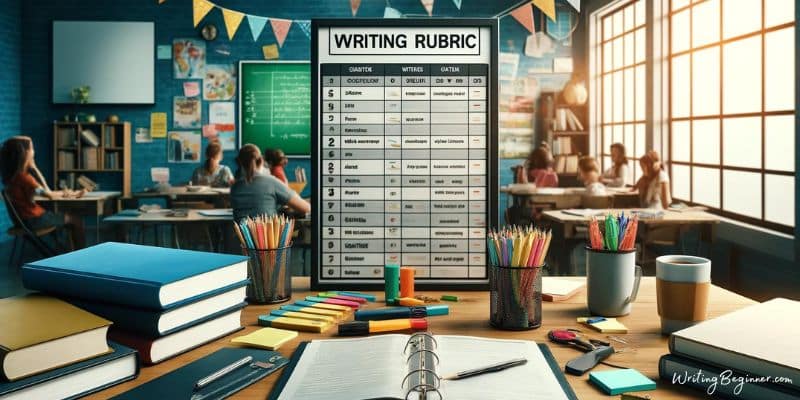
Table of Contents
A writing rubric is a scoring guide used to evaluate written work.
It lists criteria and describes levels of quality from excellent to poor. Rubrics provide a standardized way to assess writing.
They make expectations clear and grading consistent.
Key Components of a Writing Rubric
- Criteria : Specific aspects of writing being evaluated (e.g., grammar, organization).
- Descriptors : Detailed descriptions of what each level of performance looks like.
- Scoring Levels : Typically, a range (e.g., 1-4 or 1-6) showing levels of mastery.
Example Breakdown
| Criteria | 4 (Excellent) | 3 (Good) | 2 (Fair) | 1 (Poor) |
|---|---|---|---|---|
| Grammar | No errors | Few minor errors | Several errors | Many errors |
| Organization | Clear and logical | Mostly clear | Somewhat clear | Not clear |
| Content | Thorough and insightful | Good, but not thorough | Basic, lacks insight | Incomplete or off-topic |
Benefits of Using Writing Rubrics
Writing rubrics offer many advantages:
- Clarity : Rubrics clarify expectations for students. They know what is required for each level of performance.
- Consistency : Rubrics standardize grading. This ensures fairness and consistency across different students and assignments.
- Feedback : Rubrics provide detailed feedback. Students understand their strengths and areas for improvement.
- Efficiency : Rubrics streamline the grading process. Teachers can evaluate work more quickly and systematically.
- Self-Assessment : Students can use rubrics to self-assess. This promotes reflection and responsibility for their learning.
Examples of Writing Rubrics
Here are some examples of writing rubrics.
Narrative Writing Rubric
| Criteria | 4 (Excellent) | 3 (Good) | 2 (Fair) | 1 (Poor) |
|---|---|---|---|---|
| Story Elements | Well-developed | Developed, some details | Basic, missing details | Underdeveloped |
| Creativity | Highly creative | Creative | Some creativity | Lacks creativity |
| Grammar | No errors | Few minor errors | Several errors | Many errors |
| Organization | Clear and logical | Mostly clear | Somewhat clear | Not clear |
| Language Use | Rich and varied | Varied | Limited | Basic or inappropriate |
Persuasive Writing Rubric
| Criteria | 4 (Excellent) | 3 (Good) | 2 (Fair) | 1 (Poor) |
|---|---|---|---|---|
| Argument | Strong and convincing | Convincing, some gaps | Basic, lacks support | Weak or unsupported |
| Evidence | Strong and relevant | Relevant, but not strong | Some relevant, weak | Irrelevant or missing |
| Grammar | No errors | Few minor errors | Several errors | Many errors |
| Organization | Clear and logical | Mostly clear | Somewhat clear | Not clear |
| Language Use | Persuasive and engaging | Engaging | Somewhat engaging | Not engaging |
Best Practices for Creating Writing Rubrics
Let’s look at some best practices for creating useful writing rubrics.
1. Define Clear Criteria
Identify specific aspects of writing to evaluate. Be clear and precise.
The criteria should reflect the key components of the writing task. For example, for a narrative essay, criteria might include plot development, character depth, and use of descriptive language.
Clear criteria help students understand what is expected and allow teachers to provide targeted feedback.
Insider Tip : Collaborate with colleagues to establish consistent criteria across grade levels. This ensures uniformity in expectations and assessments.
2. Use Detailed Descriptors
Describe what each level of performance looks like.
This ensures transparency and clarity. Avoid vague language. Instead of saying “good,” describe what “good” entails. For example, “Few minor grammatical errors that do not impede readability.”
Detailed descriptors help students gauge their performance accurately.
Insider Tip : Use student work samples to illustrate each performance level. This provides concrete examples and helps students visualize expectations.
3. Involve Students
Involve students in the rubric creation process. This increases their understanding and buy-in.
Ask for their input on what they think is important in their writing.
This collaborative approach not only demystifies the grading process but also fosters a sense of ownership and responsibility in students.
Insider Tip : Conduct a workshop where students help create a rubric for an upcoming assignment. This interactive session can clarify doubts and make students more invested in their work.
4. Align with Objectives
Ensure the rubric aligns with learning objectives. This ensures relevance and focus.
If the objective is to enhance persuasive writing skills, the rubric should emphasize argument strength, evidence quality, and persuasive techniques.
Alignment ensures that the assessment directly supports instructional goals.
Insider Tip : Regularly revisit and update rubrics to reflect changes in curriculum and instructional priorities. This keeps the rubrics relevant and effective.
5. Review and Revise
Regularly review and revise rubrics. Ensure they remain accurate and effective.
Solicit feedback from students and colleagues. Continuous improvement of rubrics ensures they remain a valuable tool for both assessment and instruction.
Insider Tip : After using a rubric, take notes on its effectiveness. Were students confused by any criteria? Did the rubric cover all necessary aspects of the assignment? Use these observations to make adjustments.
6. Be Consistent
Use the rubric consistently across all assignments.
This ensures fairness and reliability. Consistency in applying the rubric helps build trust with students and maintains the integrity of the assessment process.
Insider Tip : Develop a grading checklist to accompany the rubric. This can help ensure that all criteria are consistently applied and none are overlooked during the grading process.
7. Provide Examples
Provide examples of each performance level.
This helps students understand expectations. Use annotated examples to show why a particular piece of writing meets a specific level.
This visual and practical demonstration can be more effective than descriptions alone.
Insider Tip : Create a portfolio of exemplar works for different assignments. This can be a valuable resource for both new and experienced teachers to standardize grading.
How to Use Writing Rubrics Effectively
Here is how to use writing rubrics like the pros.
1. Introduce Rubrics Early
Introduce rubrics at the beginning of the assignment.
Explain each criterion and performance level. This upfront clarity helps students understand what is expected and guides their work from the start.
Insider Tip : Conduct a rubric walkthrough session where you discuss each part of the rubric in detail. Allow students to ask questions and provide examples to illustrate each criterion.
2. Use Rubrics as a Teaching Tool
Use rubrics to teach writing skills. Discuss what constitutes good writing and why.
This can be an opportunity to reinforce lessons on grammar, organization, and other writing components.
Insider Tip : Pair the rubric with writing workshops. Use the rubric to critique sample essays and show students how to apply the rubric to improve their own writing.
3. Provide Feedback
Use the rubric to give detailed feedback. Highlight strengths and areas for improvement.
This targeted feedback helps students understand their performance and learn how to improve.
Insider Tip : Instead of just marking scores, add comments next to each criterion on the rubric. This personalized feedback can be more impactful and instructive for students.
4. Encourage Self-Assessment
Encourage students to use rubrics to self-assess.
This promotes reflection and growth. Before submitting their work, ask students to evaluate their own writing against the rubric.
This practice fosters self-awareness and critical thinking.
Insider Tip : Incorporate self-assessment as a mandatory step in the assignment process. Provide a simplified version of the rubric for students to use during self-assessment.
5. Use Rubrics for Peer Assessment
Use rubrics for peer assessment. This allows students to learn from each other.
Peer assessments can provide new perspectives and reinforce learning.
Insider Tip : Conduct a peer assessment workshop. Train students on how to use the rubric to evaluate each other’s work constructively. This can improve the quality of peer feedback.
6. Reflect and Improve
Reflect on the effectiveness of the rubric. Make adjustments as needed for future assignments.
Continuous reflection ensures that rubrics remain relevant and effective tools for assessment and learning.
Insider Tip : After an assignment, hold a debrief session with students to gather their feedback on the rubric. Use their insights to make improvements.
Check out this video about using writing rubrics:
Common Mistakes with Writing Rubrics
Creating and using writing rubrics can be incredibly effective, but there are common mistakes that can undermine their effectiveness.
Here are some pitfalls to avoid:
1. Vague Criteria
Vague criteria can confuse students and lead to inconsistent grading.
Ensure that each criterion is specific and clearly defined. Ambiguous terms like “good” or “satisfactory” should be replaced with concrete descriptions of what those levels of performance look like.
2. Overly Complex Rubrics
While detail is important, overly complex rubrics can be overwhelming for both students and teachers.
Too many criteria and performance levels can complicate the grading process and make it difficult for students to understand what is expected.
Keep rubrics concise and focused on the most important aspects of the assignment.
3. Inconsistent Application
Applying the rubric inconsistently can lead to unfair grading.
Ensure that you apply the rubric in the same way for all students and all assignments. Consistency builds trust and ensures that grades accurately reflect student performance.
4. Ignoring Student Input
Ignoring student input when creating rubrics can result in criteria that do not align with student understanding or priorities.
Involving students in the creation process can enhance their understanding and engagement with the rubric.
5. Failing to Update Rubrics
Rubrics should evolve to reflect changes in instructional goals and student needs.
Failing to update rubrics can result in outdated criteria that no longer align with current teaching objectives.
Regularly review and revise rubrics to keep them relevant and effective.
6. Lack of Examples
Without examples, students may struggle to understand the expectations for each performance level.
Providing annotated examples of work that meets each criterion can help students visualize what is required and guide their efforts more effectively.
7. Not Providing Feedback
Rubrics should be used as a tool for feedback, not just scoring.
Simply assigning a score without providing detailed feedback can leave students unclear about their strengths and areas for improvement.
Use the rubric to give comprehensive feedback that guides students’ growth.
8. Overlooking Self-Assessment and Peer Assessment
Self-assessment and peer assessment are valuable components of the learning process.
Overlooking these opportunities can limit students’ ability to reflect on their own work and learn from their peers.
Encourage students to use the rubric for self and peer assessment to deepen their understanding and enhance their skills.
What Is a Holistic Scoring Rubric for Writing?
A holistic scoring rubric for writing is a type of rubric that evaluates a piece of writing as a whole rather than breaking it down into separate criteria
This approach provides a single overall score based on the general impression of the writing’s quality and effectiveness.
Here’s a closer look at holistic scoring rubrics.
Key Features of Holistic Scoring Rubrics
- Single Overall Score : Assigns one score based on the overall quality of the writing.
- General Criteria : Focuses on the overall effectiveness, coherence, and impact of the writing.
- Descriptors : Uses broad descriptors for each score level to capture the general characteristics of the writing.
Example Holistic Scoring Rubric
| Score | Description |
|---|---|
| 5 | : Exceptionally clear, engaging, and well-organized writing. Demonstrates excellent control of language, grammar, and style. |
| 4 | : Clear and well-organized writing. Minor errors do not detract from the overall quality. Demonstrates good control of language and style. |
| 3 | : Satisfactory writing with some organizational issues. Contains a few errors that may distract but do not impede understanding. |
| 2 | : Basic writing that lacks organization and contains several errors. Demonstrates limited control of language and style. |
| 1 | : Unclear and poorly organized writing. Contains numerous errors that impede understanding. Demonstrates poor control of language and style. |
Advantages of Holistic Scoring Rubrics
- Efficiency : Faster to use because it involves a single overall judgment rather than multiple criteria.
- Flexibility : Allows for a more intuitive assessment of the writing’s overall impact and effectiveness.
- Comprehensiveness : Captures the overall quality of writing, considering all elements together.
Disadvantages of Holistic Scoring Rubrics
- Less Detailed Feedback : Provides a general score without specific feedback on individual aspects of writing.
- Subjectivity : Can be more subjective, as it relies on the assessor’s overall impression rather than specific criteria.
- Limited Diagnostic Use : Less useful for identifying specific areas of strength and weakness for instructional purposes.
When to Use Holistic Scoring Rubrics
- Quick Assessments : When a quick, overall evaluation is needed.
- Standardized Testing : Often used in standardized testing scenarios where consistency and efficiency are priorities.
- Initial Impressions : Useful for providing an initial overall impression before more detailed analysis.
Free Writing Rubric Templates
Feel free to use the following writing rubric templates.
You can easily copy and paste them into a Word Document. Please do credit this website on any written, printed, or published use.
Otherwise, go wild.
| Criteria | 4 (Excellent) | 3 (Good) | 2 (Fair) | 1 (Poor) |
|---|---|---|---|---|
| Well-developed, engaging, and clear plot, characters, and setting. | Developed plot, characters, and setting with some details missing. | Basic plot, characters, and setting; lacks details. | Underdeveloped plot, characters, and setting. | |
| Highly creative and original. | Creative with some originality. | Some creativity but lacks originality. | Lacks creativity and originality. | |
| No grammatical errors. | Few minor grammatical errors. | Several grammatical errors. | Numerous grammatical errors. | |
| Clear and logical structure. | Mostly clear structure. | Somewhat clear structure. | Lacks clear structure. | |
| Rich, varied, and appropriate language. | Varied and appropriate language. | Limited language variety. | Basic or inappropriate language. |
| Criteria | 4 (Excellent) | 3 (Good) | 2 (Fair) | 1 (Poor) |
|---|---|---|---|---|
| Strong, clear, and convincing argument. | Convincing argument with minor gaps. | Basic argument; lacks strong support. | Weak or unsupported argument. | |
| Strong, relevant, and well-integrated evidence. | Relevant evidence but not strong. | Some relevant evidence, but weak. | Irrelevant or missing evidence. | |
| No grammatical errors. | Few minor grammatical errors. | Several grammatical errors. | Numerous grammatical errors. | |
| Clear and logical structure. | Mostly clear structure. | Somewhat clear structure. | Lacks clear structure. | |
| Persuasive and engaging language. | Engaging language. | Somewhat engaging language. | Not engaging language. |
Expository Writing Rubric
| Criteria | 4 (Excellent) | 3 (Good) | 2 (Fair) | 1 (Poor) |
|---|---|---|---|---|
| Thorough, accurate, and insightful content. | Accurate content with some details missing. | Basic content; lacks depth. | Incomplete or inaccurate content. | |
| Clear and concise explanations. | Mostly clear explanations. | Somewhat clear explanations. | Unclear explanations. | |
| No grammatical errors. | Few minor grammatical errors. | Several grammatical errors. | Numerous grammatical errors. | |
| Clear and logical structure. | Mostly clear structure. | Somewhat clear structure. | Lacks clear structure. | |
| Precise and appropriate language. | Appropriate language. | Limited language variety. | Basic or inappropriate language. |
Descriptive Writing Rubric
| Criteria | 4 (Excellent) | 3 (Good) | 2 (Fair) | 1 (Poor) |
|---|---|---|---|---|
| Vivid and detailed imagery that engages the senses. | Detailed imagery with minor gaps. | Basic imagery; lacks vivid details. | Little to no imagery. | |
| Highly creative and original descriptions. | Creative with some originality. | Some creativity but lacks originality. | Lacks creativity and originality. | |
| No grammatical errors. | Few minor grammatical errors. | Several grammatical errors. | Numerous grammatical errors. | |
| Clear and logical structure. | Mostly clear structure. | Somewhat clear structure. | Lacks clear structure. | |
| Rich, varied, and appropriate language. | Varied and appropriate language. | Limited language variety. | Basic or inappropriate language. |
Analytical Writing Rubric
| Criteria | 4 (Excellent) | 3 (Good) | 2 (Fair) | 1 (Poor) |
|---|---|---|---|---|
| Insightful, thorough, and well-supported analysis. | Good analysis with some depth. | Basic analysis; lacks depth. | Weak or unsupported analysis. | |
| Strong, relevant, and well-integrated evidence. | Relevant evidence but not strong. | Some relevant evidence, but weak. | Irrelevant or missing evidence. | |
| No grammatical errors. | Few minor grammatical errors. | Several grammatical errors. | Numerous grammatical errors. | |
| Clear and logical structure. | Mostly clear structure. | Somewhat clear structure. | Lacks clear structure. | |
| Precise and appropriate language. | Appropriate language. | Limited language variety. | Basic or inappropriate language. |
Final Thoughts: Writing Rubrics
I have a lot more resources for teaching on this site.
Check out some of the blog posts I’ve listed below. I think you might enjoy them.
Read This Next:
- Narrative Writing Graphic Organizer [Guide + Free Templates]
- 100 Best A Words for Kids (+ How to Use Them)
- 100 Best B Words For Kids (+How to Teach Them)
- 100 Dictation Word Ideas for Students and Kids
- 50 Tricky Words to Pronounce and Spell (How to Teach Them)

- Instructors
- Institutions
- Teaching Strategies
- Higher Ed Trends
- Academic Leadership
- Affordability
- Product Updates
Using Rubrics to Grade Writing Assignments

Audrey Wick is an English professor and Cengage Faculty Partner
As an instructor, how do you get students to remember concepts you teach?
If you are like most instructors, the answer is “any way I can!”
Indeed, instructors use a variety of techniques to not only teach, but also to assess the learning process. And since instructors are held accountable for success results through data gathering, analysis and reporting, there are many challenges that can arise because of the process.
Enter Rubrics
A rubric is a scoring tool that lists criteria for grading written work. Rubrics are in use by many standardized test companies as well as across primary and secondary grade levels. No wonder then, that college instructors also rely on rubrics since students come into the classroom conditioned for their use.
Additionally, rubrics are beneficial because they:
- Create a shared understanding of assignment requirements between the student and the instructor
- Help students know what questions to ask about assignment completion
- Allow a method of self-editing by enabling a student to “see” what will be assessed
- Simplify grading and apply consistency of standards across each assignment set
To ensure rubrics are implemented smoothly, consider these four tips.
1. Good rubrics are assignment-specific.
Whether a student is completing an annotated bibliography, a research paper or an end-of-semester portfolio, a good rubric should match the assignment. Each evaluation tool needs to address not only assignment parameters but also take into account expected skills, desired learning outcomes and general semester timing. For instance, what works for a first assignment, in a long semester course, may not be the right rubric for an assignment submitted at the semester’s end.
2. Good rubrics work within the existing curriculum.
There are a lot of moving parts when it comes to class curriculum. The course description, class syllabus, student learning outcomes and instructional design goals should all be considered when an instructor is designing a rubric . What gets assessed—and how much weight is assigned to those metrics—can be decided when a rubric is meaningfully considered next to the other “gears” that are already in place in the clockwork of the college class.
3. Good rubrics are easy to understand.
Reading a rubric should not be painful for students, nor should it involve the need for an advanced degree on its own. Instead, a rubric should be organized in such a way that it allows a student to easily infer the expectations. Keep it to one page—or less. Highlight the exact criteria in some way, through headings, bullet points or bold text. Using rows, columns or a table approach can help achieve a readable structure as well.
4. Good rubrics are made available to students.
Don’t hide the rubrics from students and don’t present them for use AFTER a student has already submitted an assignment. Post them digitally, share hard copies or make them available in some other way, so that students have time to see them, ask questions and use them in their own self-editing of assignments prior to submission. This will also encourage students to manage individual expectations when it comes to their eventual grade on an assignment.
You’re Ready!
Instructors work hard to help students, and that extends to the evaluation of written assignments as well. Assessment of that learning process—especially when it comes to written assignments—can be made more beneficial through the use of rubrics.
Want to learn more about course design and specific evaluation tools including free, downloadable rubrics? Check out this article, Creating a Foundation for a Solid Online Course .
Related articles.


IMAGES
VIDEO
COMMENTS
Teach Simple September 7, 2022. First grade writing rubrics are helpful tools for both you and your students when introducing an assignment and what is expected. They clearly outline what is to be included in the paragraph and will function as a reference for the students as they are writing. To introduce rubrics to first grade students, start ...
Grade 1: Writing Rubrics. NOTE: The language in these rubrics has been adapted from the SBAC and PARCC rubrics. The language in bold is taken directly from the CCSS. Write opinion pieces in which they introduce the topic or name the book they are writing about, state an opinion, supply a reason for the opinion, and provide some sense of closure.
Rubrics lay out expectations of an assignment by listing criteria and levels of quality on a scale. For example, on a writing rubric the criteria may be 'Uses punctuation accurately' or 'Begins with capital letter.' The scale (level of quality) may be needs improvement; ... I've been teaching first grade for 6 years now, so I've read a lot ...
Receiving feedback on your writing and reflecting on your writing is very important as a young student!To help your students with both, here are two FREE writing rubrics:1. student self-evaluation2. teacher evaluation for studentThese rubrics are easy to read for young students with smile faces for visuals.
Other Ideas for 1st Grade Writing Rubrics You may also want to consider the six traits writing rubric for use with advanced first graders. It scores students on the use of the seven traits of six (plus one) writing. Print the First Grade Writing Rubric. Print the 1st Grade Writing Rubric. Make Writing A Blast! K through 2nd Live It Up, Write It ...
Making/using rubrics helps me to really think about what I expect from my students as writers. I've been teaching first grade for 6 years now, so I've read a lot of student writing! I've experienced so many different levels of writing and writing styles. I realized early on that there isn't just "good writing' and "not so good ...
After many years of cutting out rubrics and stapling them on to writing samples, I realized I could embed them into the actual writing template! This has saved tons of time, trees
1st Grade Narrative Writing Rubric W.1.3 Write narratives in which they recount sequenced events. Construct Measured 3 = Meets Grade Level Expectations 2 = Approaching Grade Level Expectations 1 = Below Grade Level Expectations Points Awarded (Organization & Structure) The writing: W.1.3 effectively recounts 2 or more appropriately
Rubrics are an incredibly useful tool for grading a wide variety of student work. This lesson will detail and provide a sample of a rubric that can be used to grade writing in a first grade classroom.
Common Core: Writing Standards Narrative Rubric (grade 1) Overview. This rubric is aligned with the Common Core Writing Standards; Narrative writing for grade 1. Use this with any of your writing assignments or assessments. CC: W.1.3-5
The four-point rubric uses four potential points the student can earn for each area, such as 1) strong, 2) developing, 3) emerging, and 4) beginning. To turn your rubric score into a letter grade, divide the points earned by the points possible. Example: The student earns 18 out of 20 points. 18/20 = 90 percent; 90 percent = A.
140. $1.00. PDF. This rubric is based on the Common Core Standards. The rubric is designed for Lucy Calkin's Personal Narrative Writing Unit for 1st grade. This unit goes along with Personal Narrative Writing 1st Grade Rubric but is designed for students to score themselves. Use along with this Ready-to-Use Small.
This document outlines a rubric for grading first grade writing assignments on a scale of 1 to 4. A score of 4 indicates 5 or more complete sentences with proper punctuation, capitalization, spelling, and topic details. A 3 score means 3-4 complete sentences are written with most punctuation, capitalization, and topic details. A score of 2 represents 1-2 sentences that include some on-topic ...
Step One: Identifying Criteria. The first step involved in creating assignment-specific rubrics is revisiting an assignment's intended outcomes. These objectives can be considered, prioritized, and reworded to create a rubric's criteria. If, for example, an instructor assigns a literature review hoping that students might become skilled at ...
Try this rubric to make student expectations clear and end-of-project assessment easier. Learn more: Free Technology for Teachers. 100-Point Essay Rubric. Need an easy way to convert a scoring rubric to a letter grade? This example for essay writing earns students a final score out of 100 points. Learn more: Learn for Your Life. Drama ...
Step 7: Create your rubric. Create your rubric in a table or spreadsheet in Word, Google Docs, Sheets, etc., and then transfer it by typing it into Moodle. You can also use online tools to create the rubric, but you will still have to type the criteria, indicators, levels, etc., into Moodle.
Receiving feedback on your writing and reflecting on your writing is very important as a young student! To help your students with both, here are two FREE writing rubrics: 1. student self-evaluation 2. teacher evaluation for student These rubrics are easy to read for young students with smile faces for visuals.
Benefits of Using Writing Rubrics. Writing rubrics offer many advantages: Clarity: Rubrics clarify expectations for students. They know what is required for each level of performance. Consistency: Rubrics standardize grading. This ensures fairness and consistency across different students and assignments. Feedback: Rubrics provide detailed ...
Simplify grading and apply consistency of standards across each assignment set. To ensure rubrics are implemented smoothly, consider these four tips. 1. Good rubrics are assignment-specific. Whether a student is completing an annotated bibliography, a research paper or an end-of-semester portfolio, a good rubric should match the assignment.
You'll develop a prompt any time you want your students to complete a written assignment. Along with this prompt, you will want to create a rubric, which has the dual benefit of helping students to understand how they will be graded and helping you to grade fairly and accurately. Prompts and rubrics can be short and simple, or complex and ...
Browse first grade editable writing rubric resources on Teachers Pay Teachers, a marketplace trusted by millions of teachers for original educational resources.
• All assignments must be completed to receive a grade and are expected to reflect the quality that teacher-training institutions require of professional educators. If completed assignments do not meet this standard, students will be notified with further instructions from the instructor. Grading Rubrics Grade Percent Description Rubric
This is a great rubric to use to assess student How-To writing samples. The student is scored on an excellent job, appropriate usage, or needs improvement scale. The skills assessed are content (clear purpose/topic, steps for how-to, use of sequential words), mechanics (capitalization, punctuation...